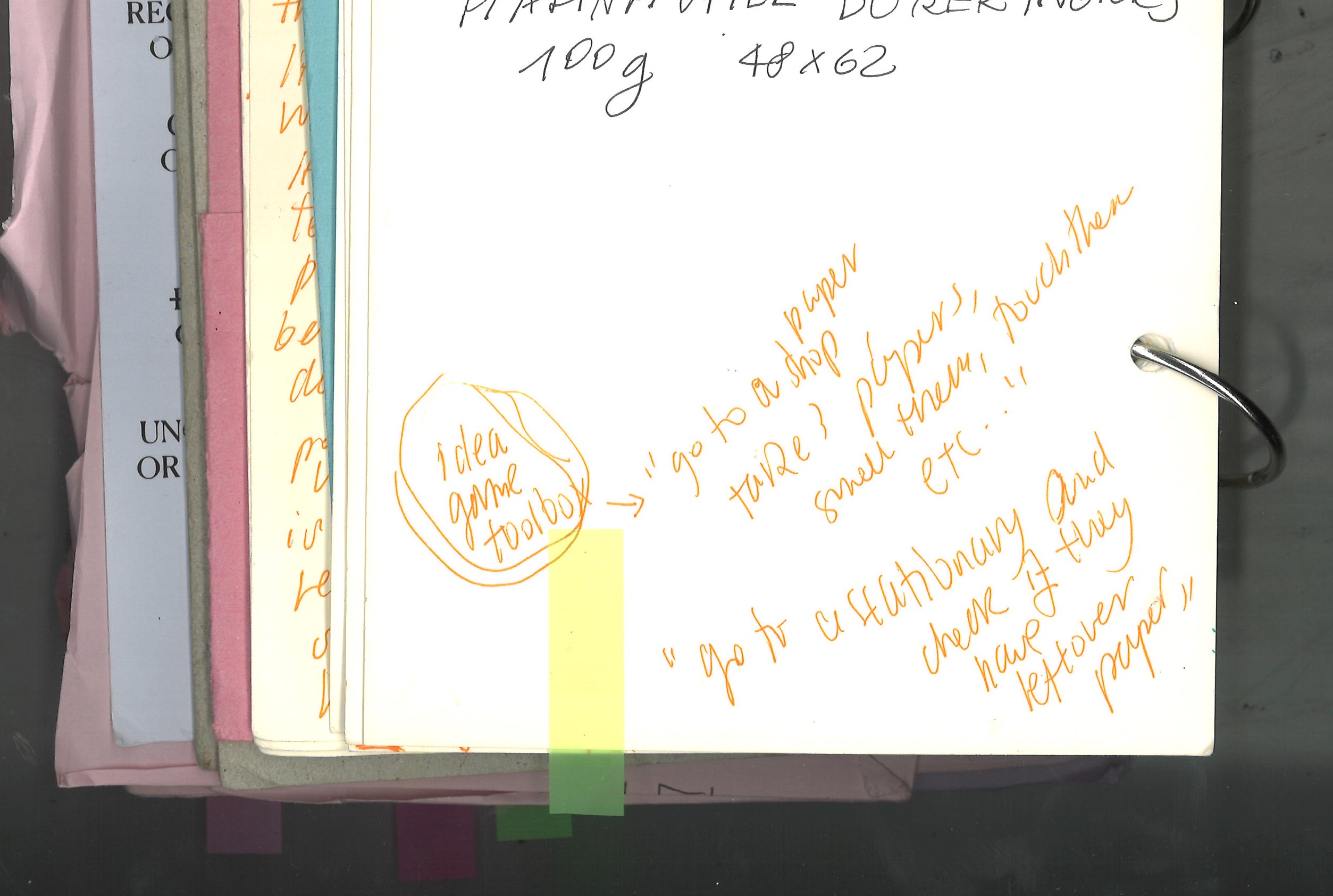
to help a stream of consciousness
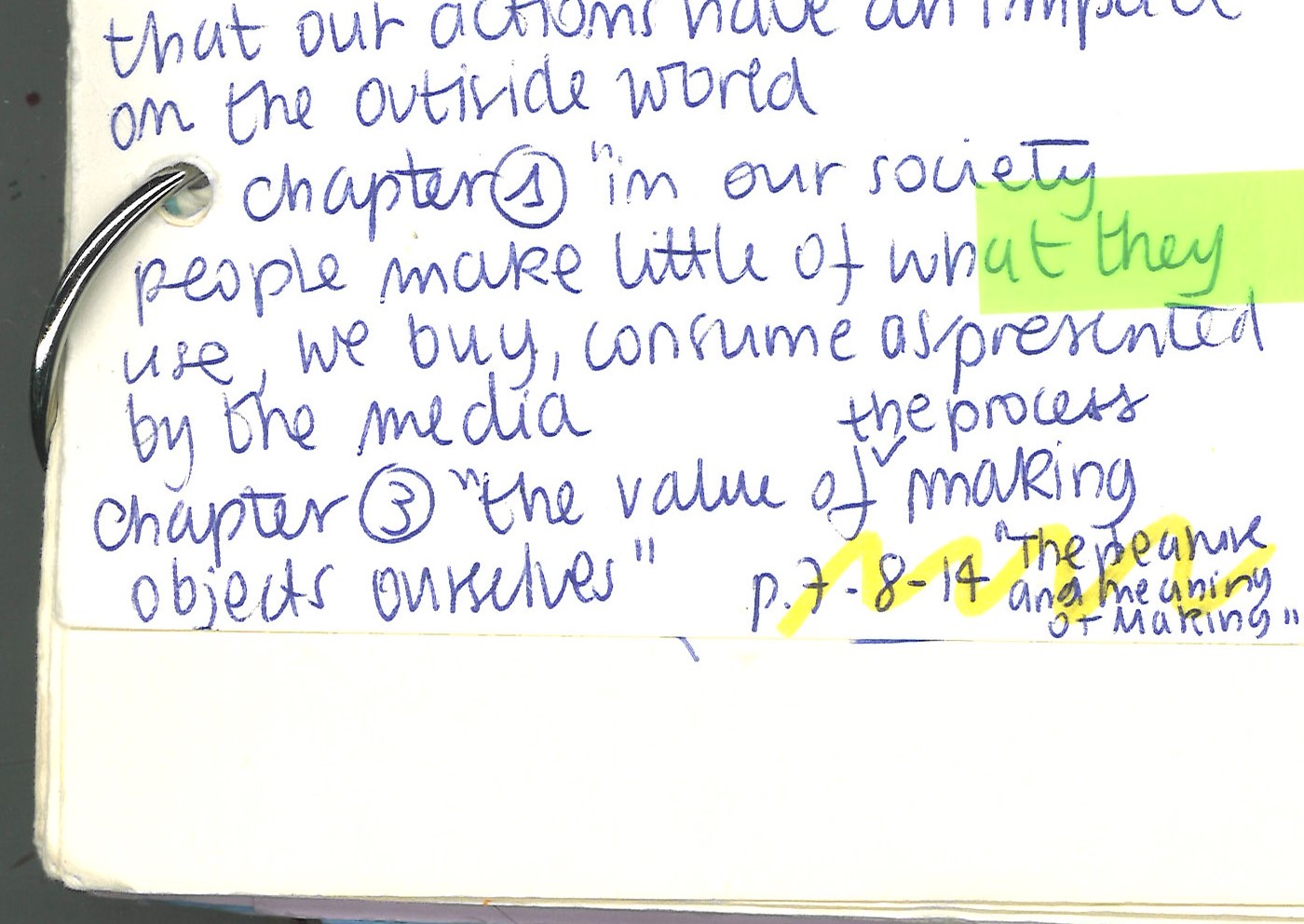

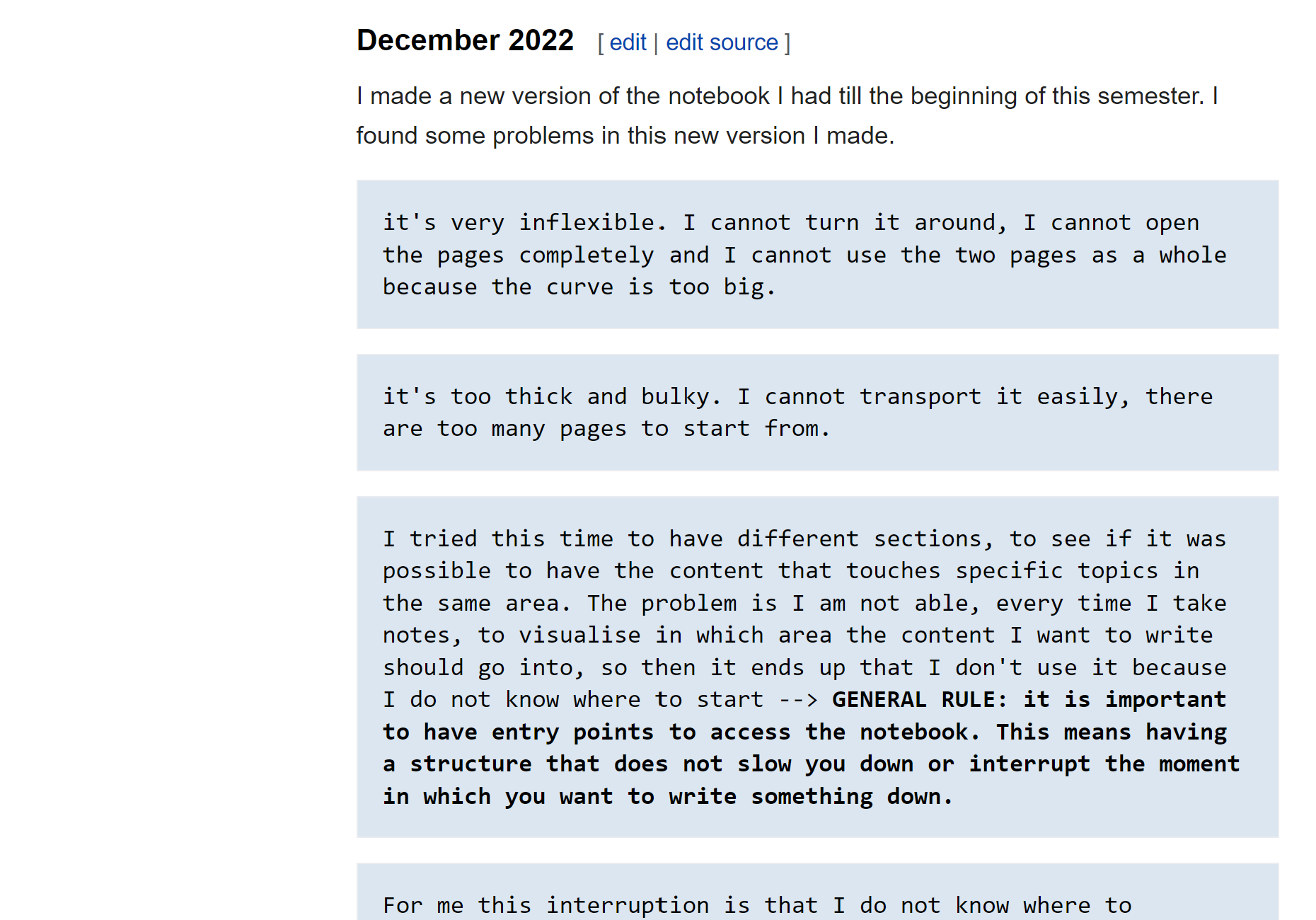

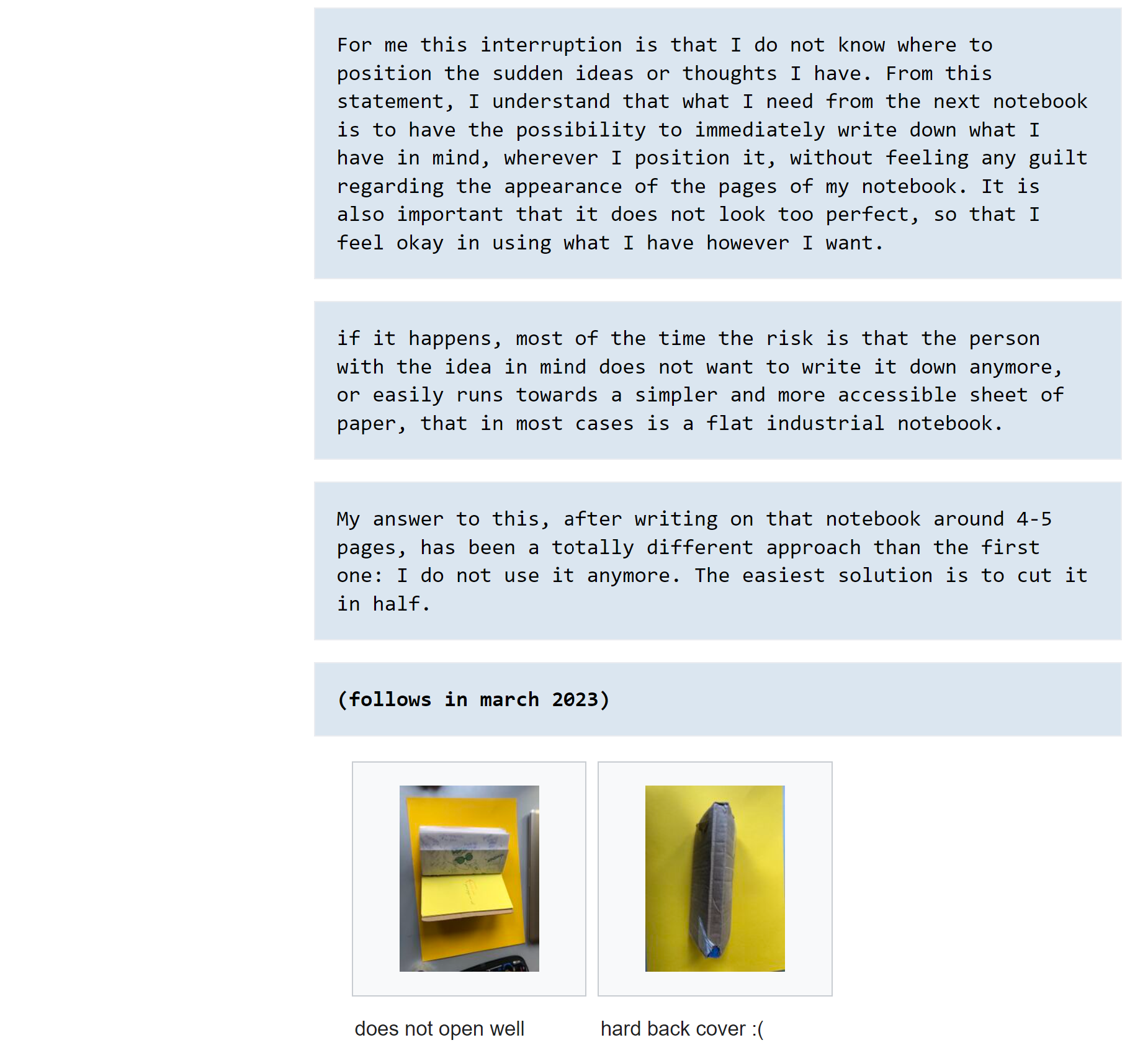
.jpg)






.jpg)
step 3. touch the paper you have, fold it, write on it. is it too thick? too thin? too yellow? check what's right and what's not for you.
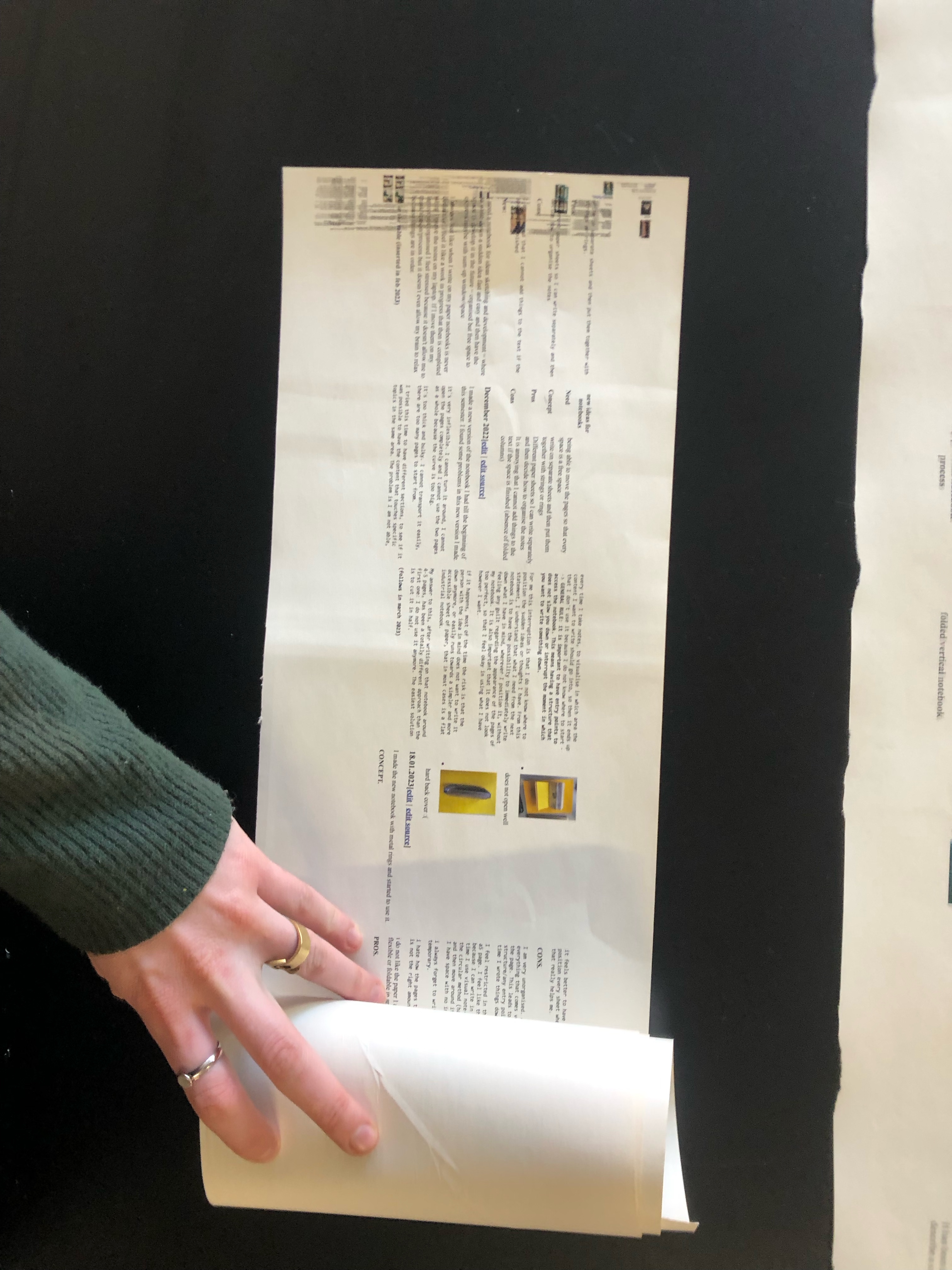
... I normally try to find the easiest and most accessible options. To solve both problems, I am happy with what I chose in the end: it lets you, the user, to take possession of this object and participate in its use and creation. This type of spine can be reused for making new notebooks, e.g. it can be cut in smaller pieces to experiment with small notebooks. You can get rid of all the pages I provided, and fill it in with yours. You can mix mines with yours. In addition, the pages can become cards and be used without the spine. Would they still be a book then? ...
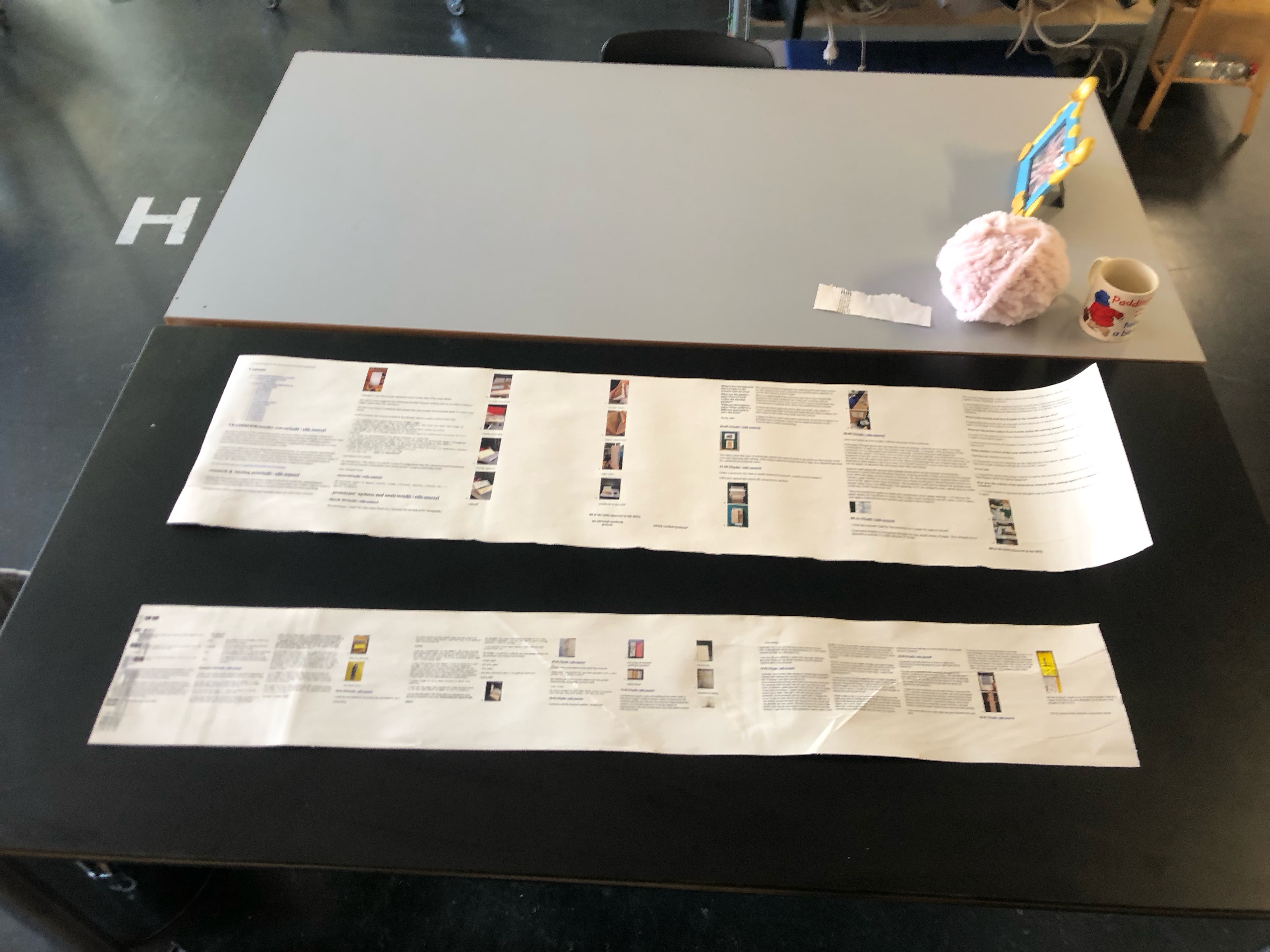
What are the positive sides? Does it work within the starting purpose? This is to understand if the solutions that have been found and applied to the new notebook are valid and working. this is important mostly not to lose track of the reasons underneath the concept and to evaluate how much the modifications worked.
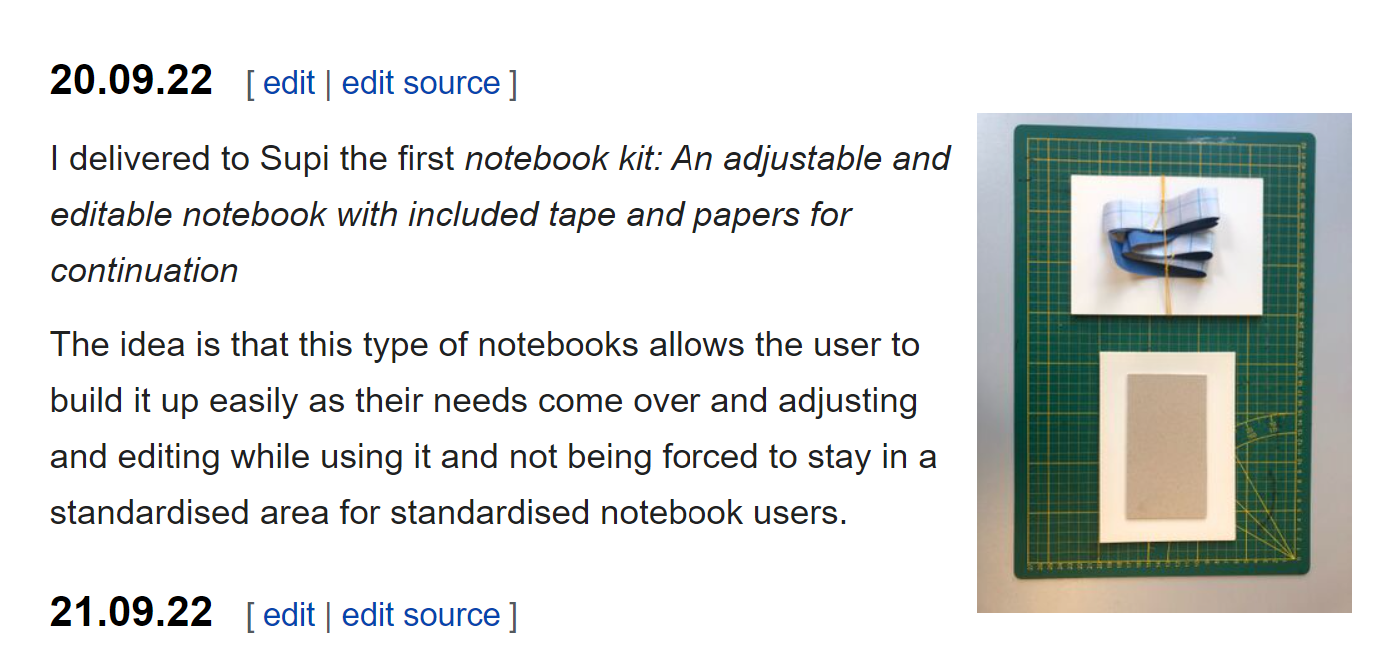
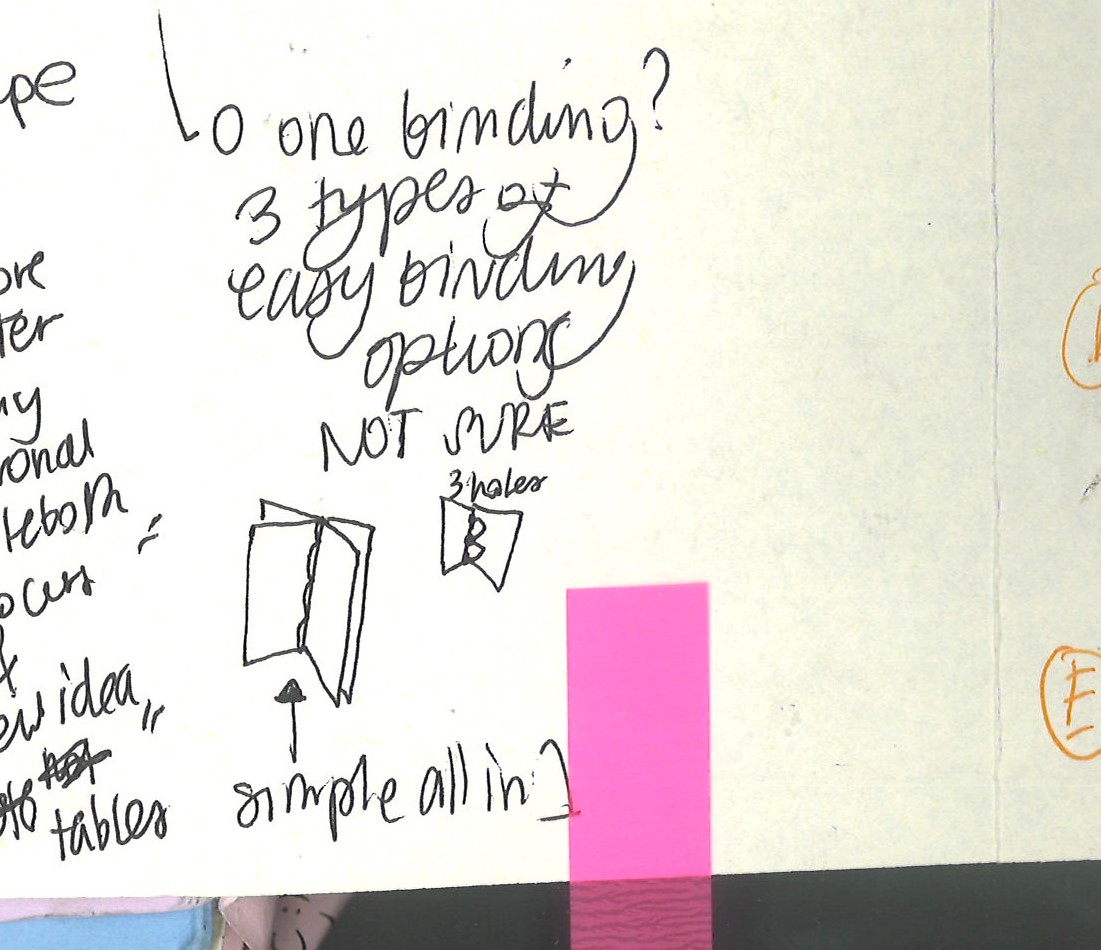
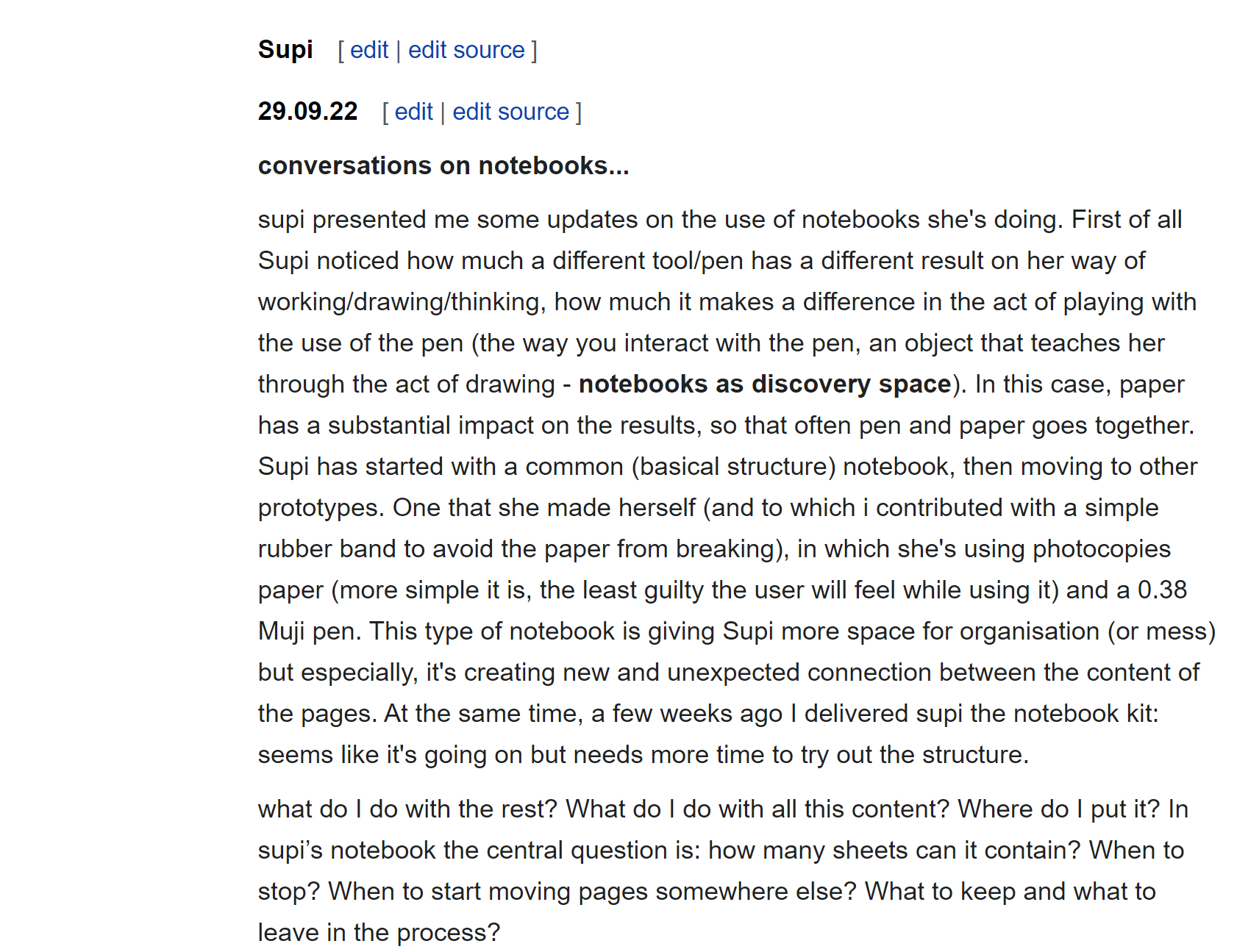
.jpg)
.jpg)
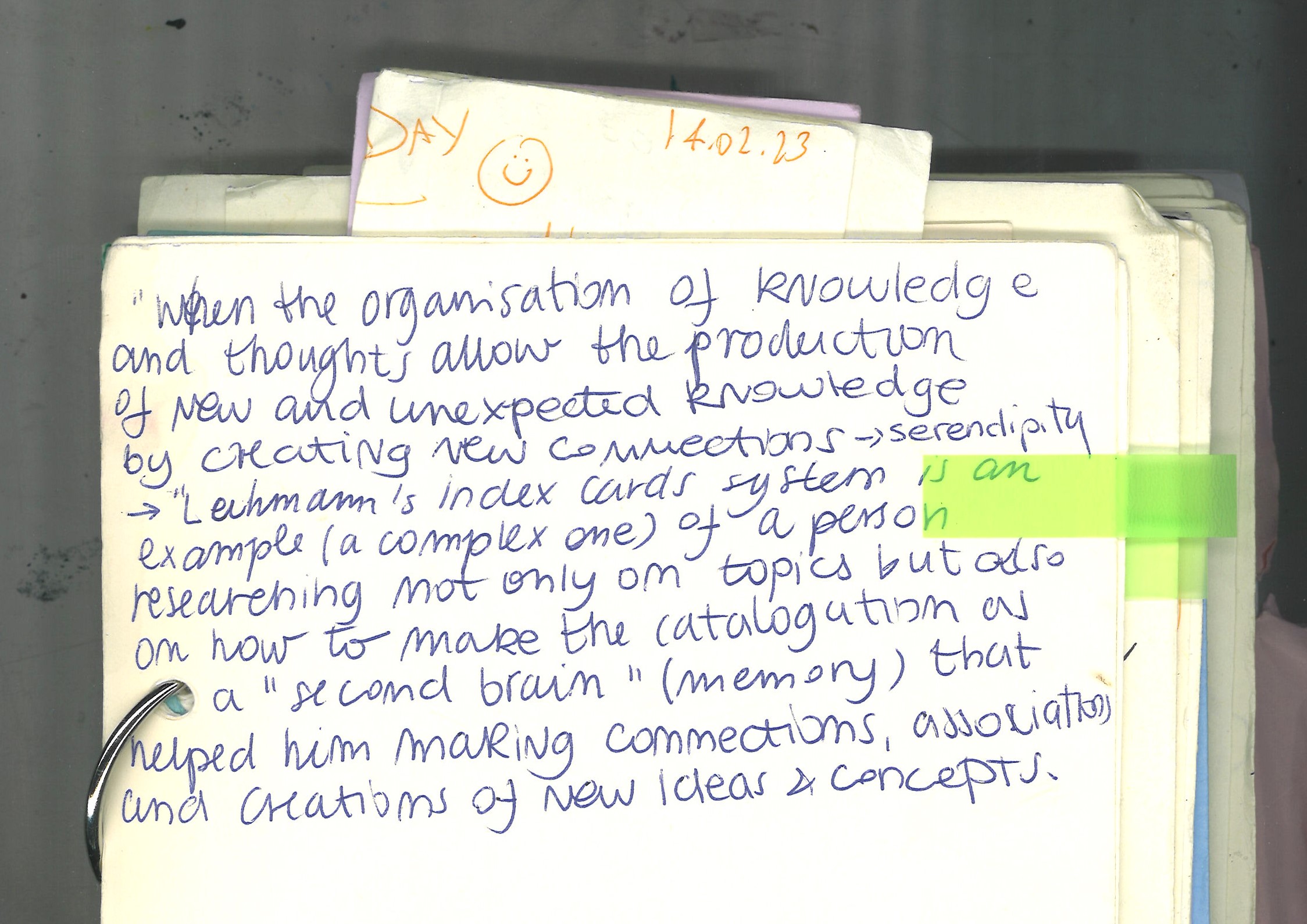
.jpg)


.jpg)
i wanted to make this publication to have two characteristics: modular and customisable. The modularity is something that became important to me and my way of taking notes and making notebooks. Modularity allows reconnections, both physically both content wise. In this context, I decided to have the entire publication as a physical "random choice" to access the content. It becomes customisable because of the type of binding i went for. I was not happy to go for plastic instead of metal, but i had the publication to allow a almost 360 degrees rotation so that all the content in the rows could reconnect to the other rows. I was also not happy with having the problem of being obliged to buy something specific to achieve my intent. I normally try to find the most easy and accessible options. To solve both problems, I am happy with what I chose in the end because it lets you, the user, to take possession of this object and participate in its use and creation. This type of spine can be cut in smaller pieces if you want to experiment with small notebooks, or reused if you want to try to make your own, following some instructions contained in this book maybe. You can get rid of all the pages i provided, and fill it in with yours. You can mix mines with yours. In addition, the pages can become cards and be used without the spine. Would they still be a book then? I also inserted some empty pages in the publication, to let some space for thoughts or ideas, if they come while browsing through. The main reason though, is that i have been questioning when a notebook is not a notebook anymore. I knew this publication was going to be printed, but i hope that through this different considerations, for some this could still be defined as a notebook. The content comes all from my reflections and the notes I took, both on my laptop and on my notebooks. They were notes and now, after printing them out i wonder, are they still?
The publication is also printed on an a4 to avoid paper waste. it uses 5 different types of paper to help the user try out and feel different options already intrinsicly within the publication.
01.05.23 MAKE IT OPENABLE (apribile) WHY: because, in this way, the entire book can be taken apart and become a notebook, or just be taken apart and the rings can be used for something else and the prints can be moved around or used as cards, or attached on walls or anywhere. it opens a bit the concept of book and re-connect it to a printed notebook (a notebook that has inside printed parts that "helps" the user to create content or orientate in the space)
but it also gives the freedom to completely tear it apart- I like the idea that a book is something "stable" and in this way my work is more similar to a notebook i added notes on and leave space to others to contribute or make their own version of it.
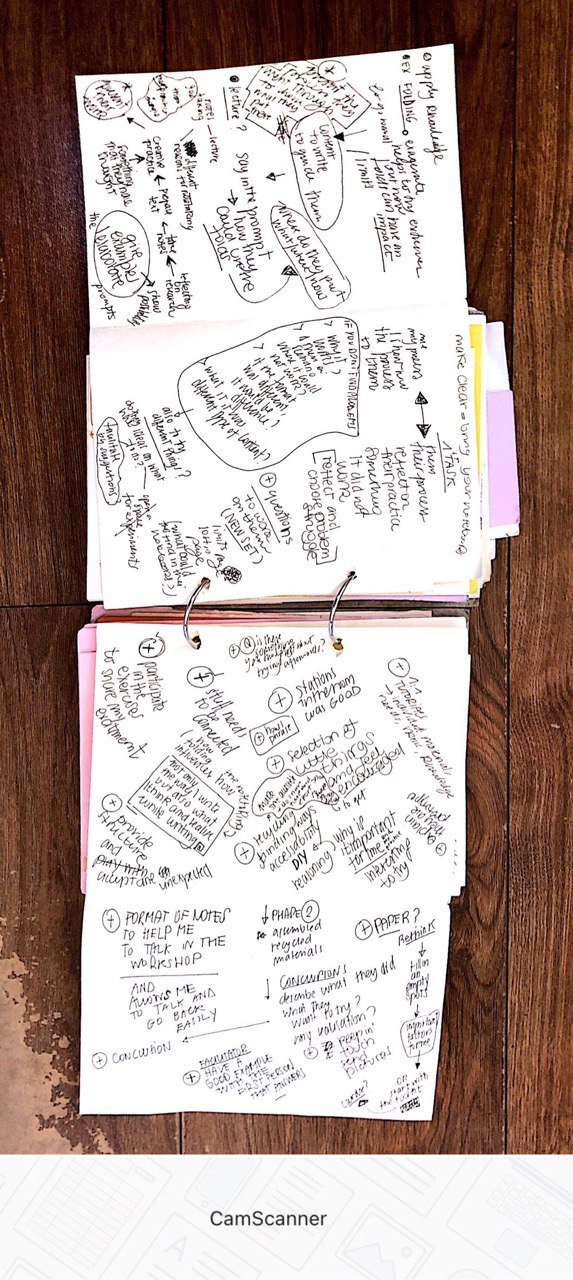

.jpg)
What is the starting need that brought to the creation and use of the notebook?** This question helps to highlight the starting point and main reason for the creation of a new notebook (or modification applied). it can be described in a few words.


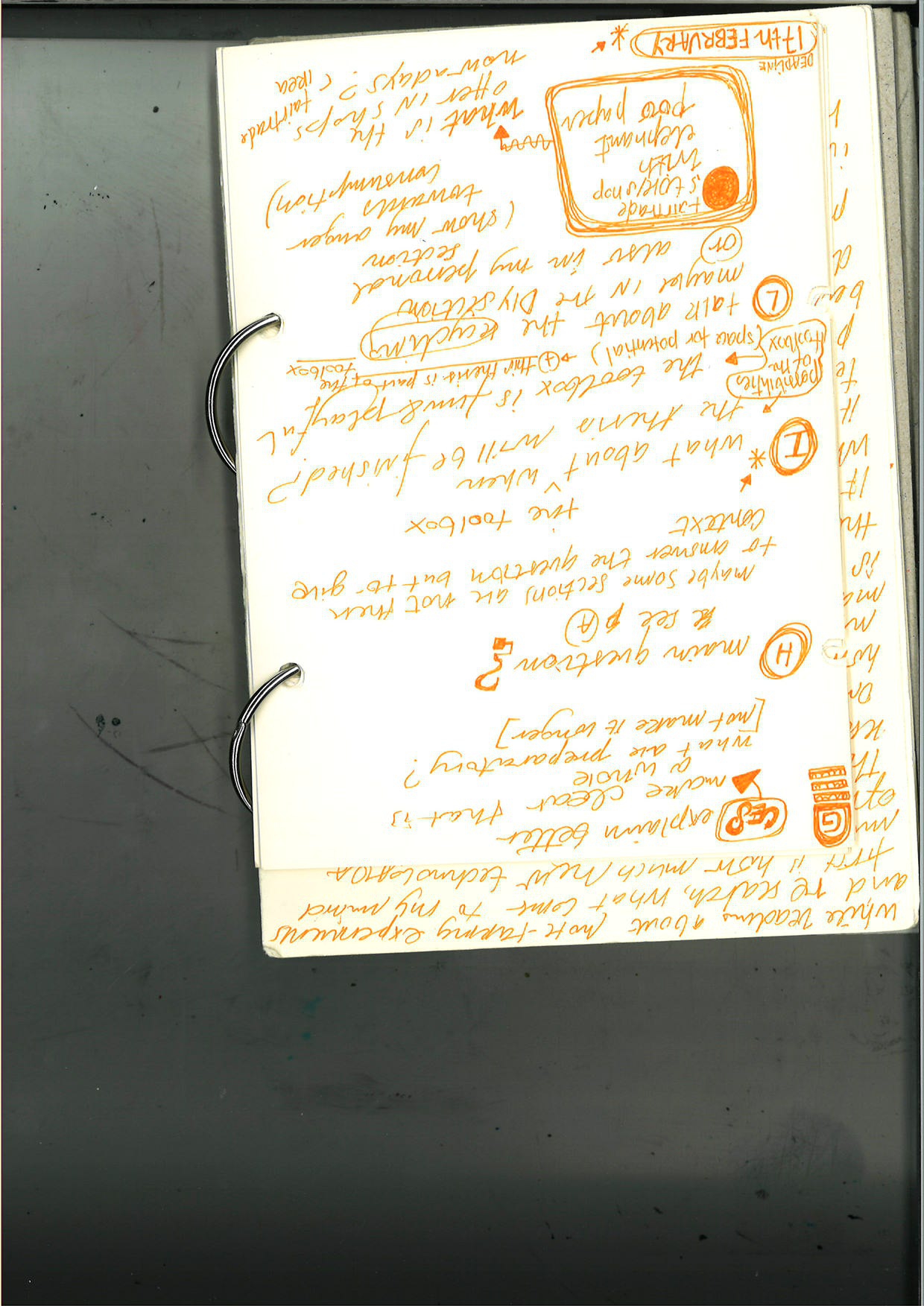

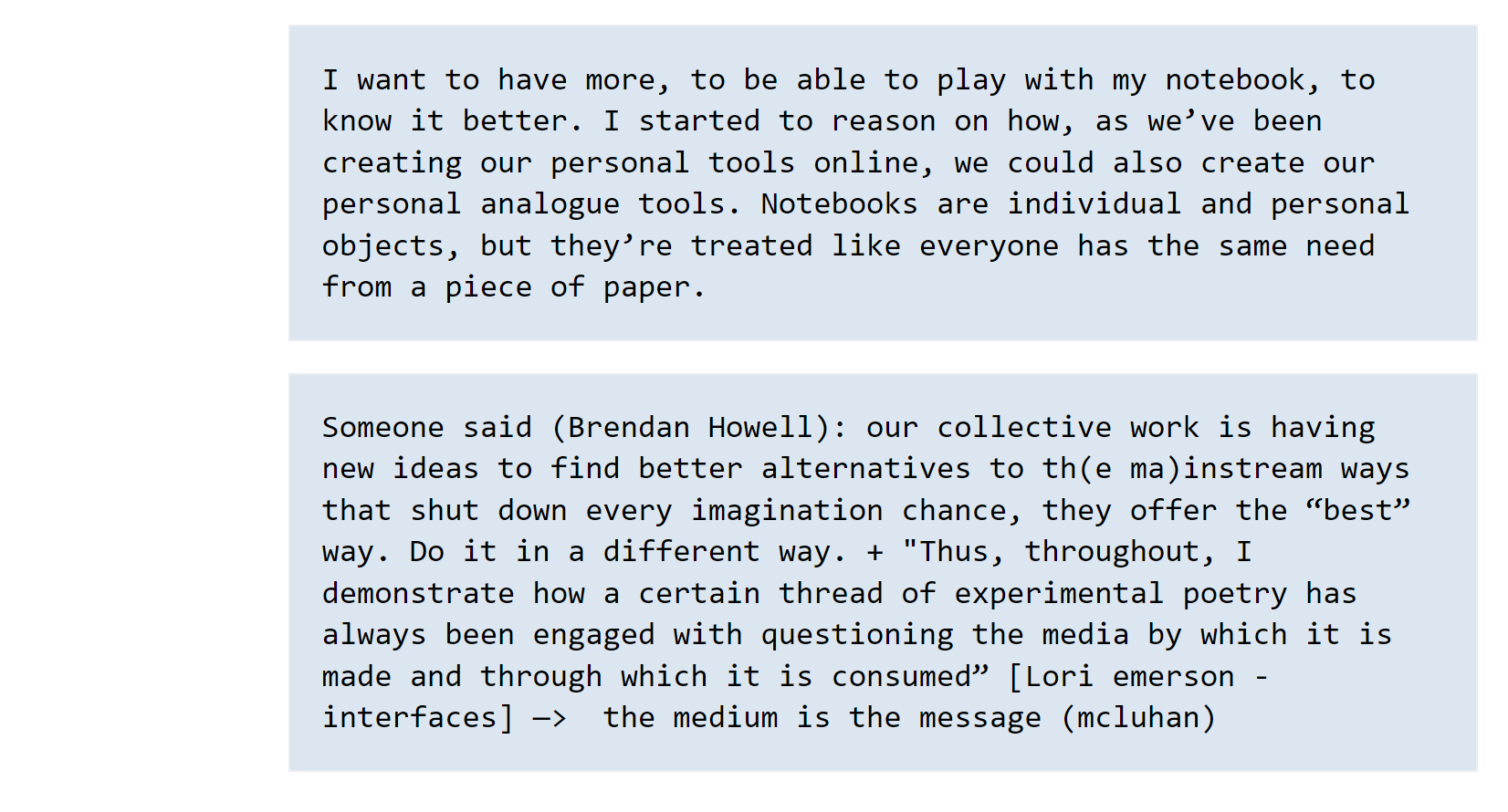
.jpg)
step 10. put everything together and start again. did you achieve your requests? can you do something different?
.jpg)
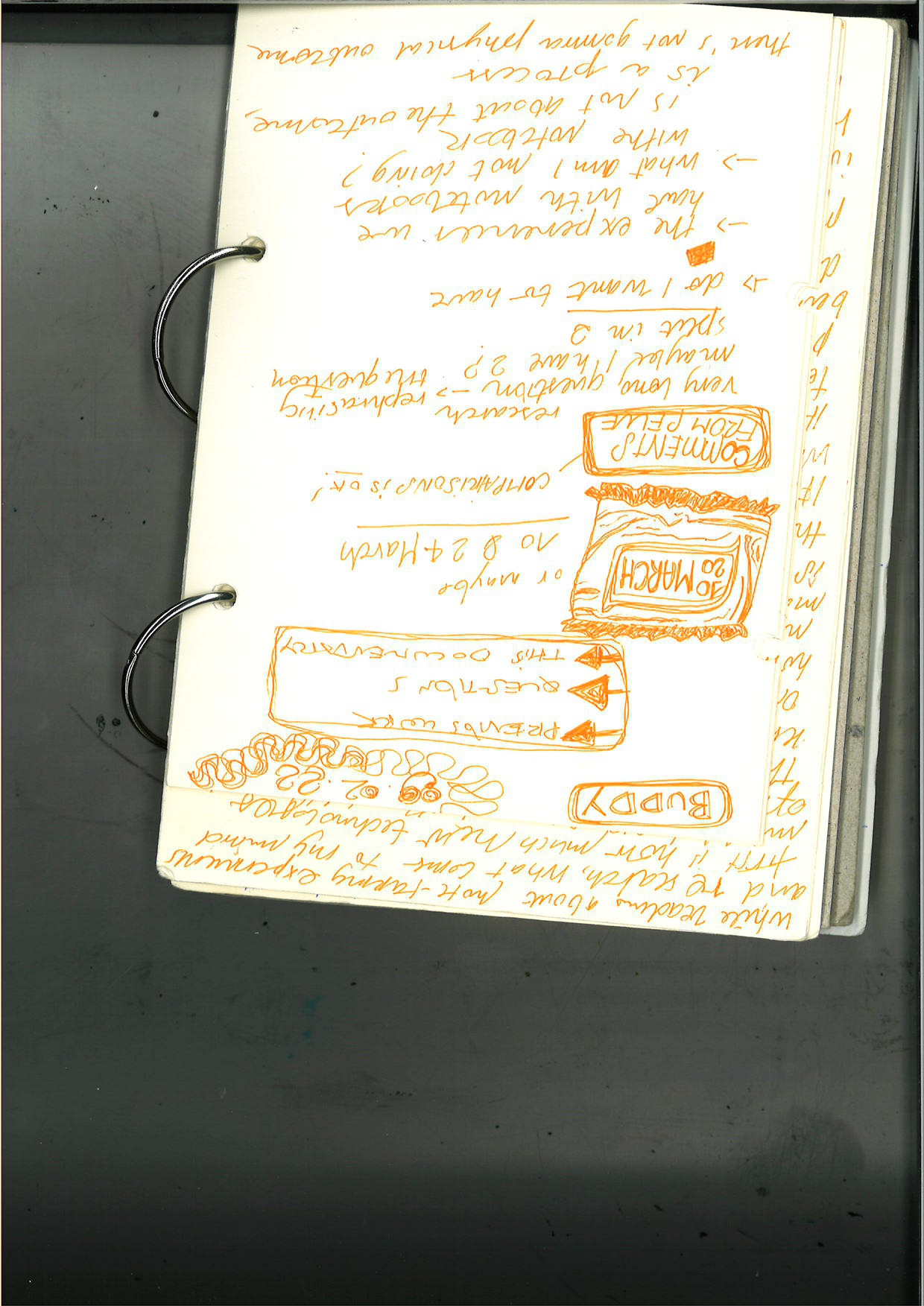
.jpg)
step 9. fold it, or not. bind it, or not.
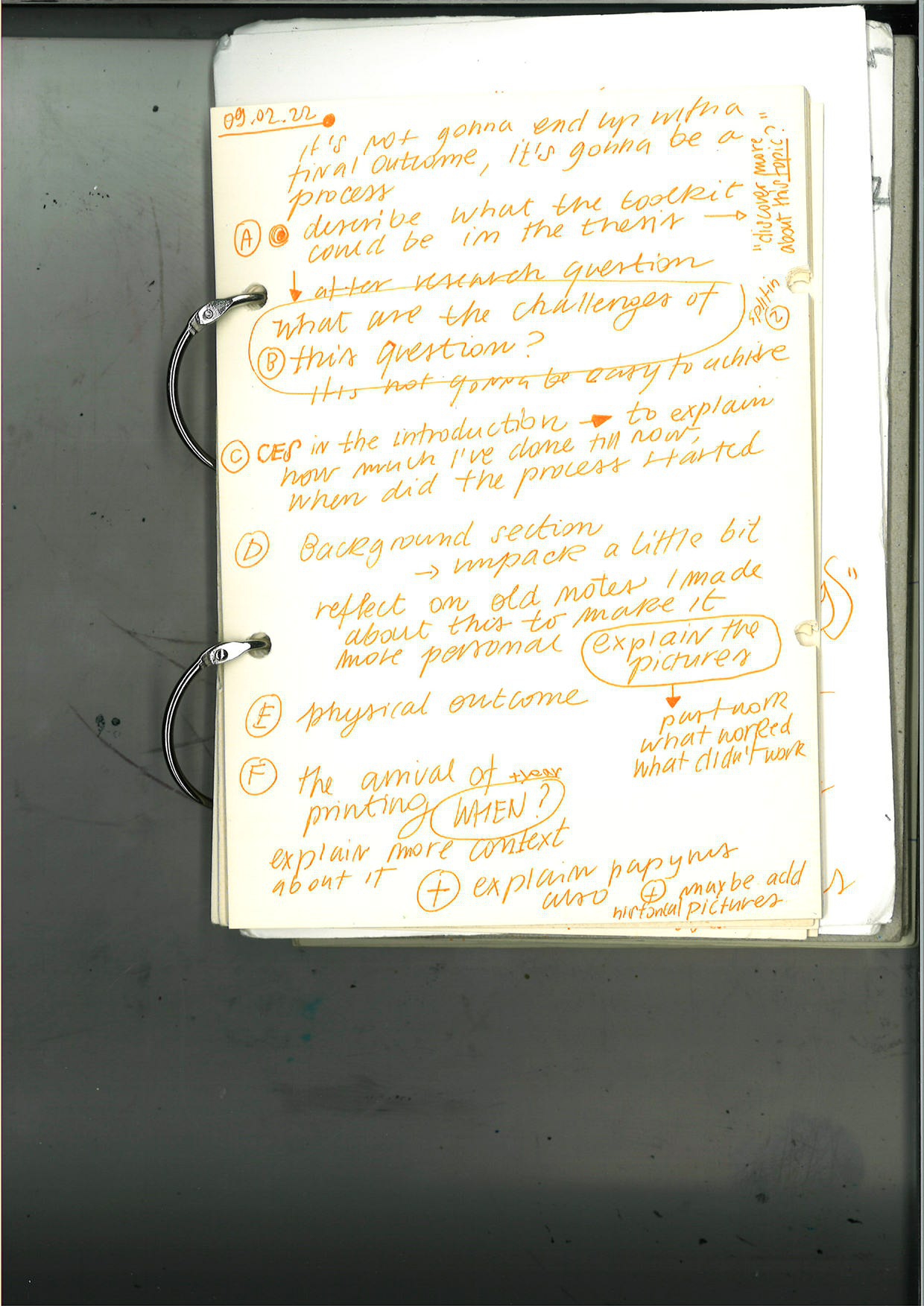

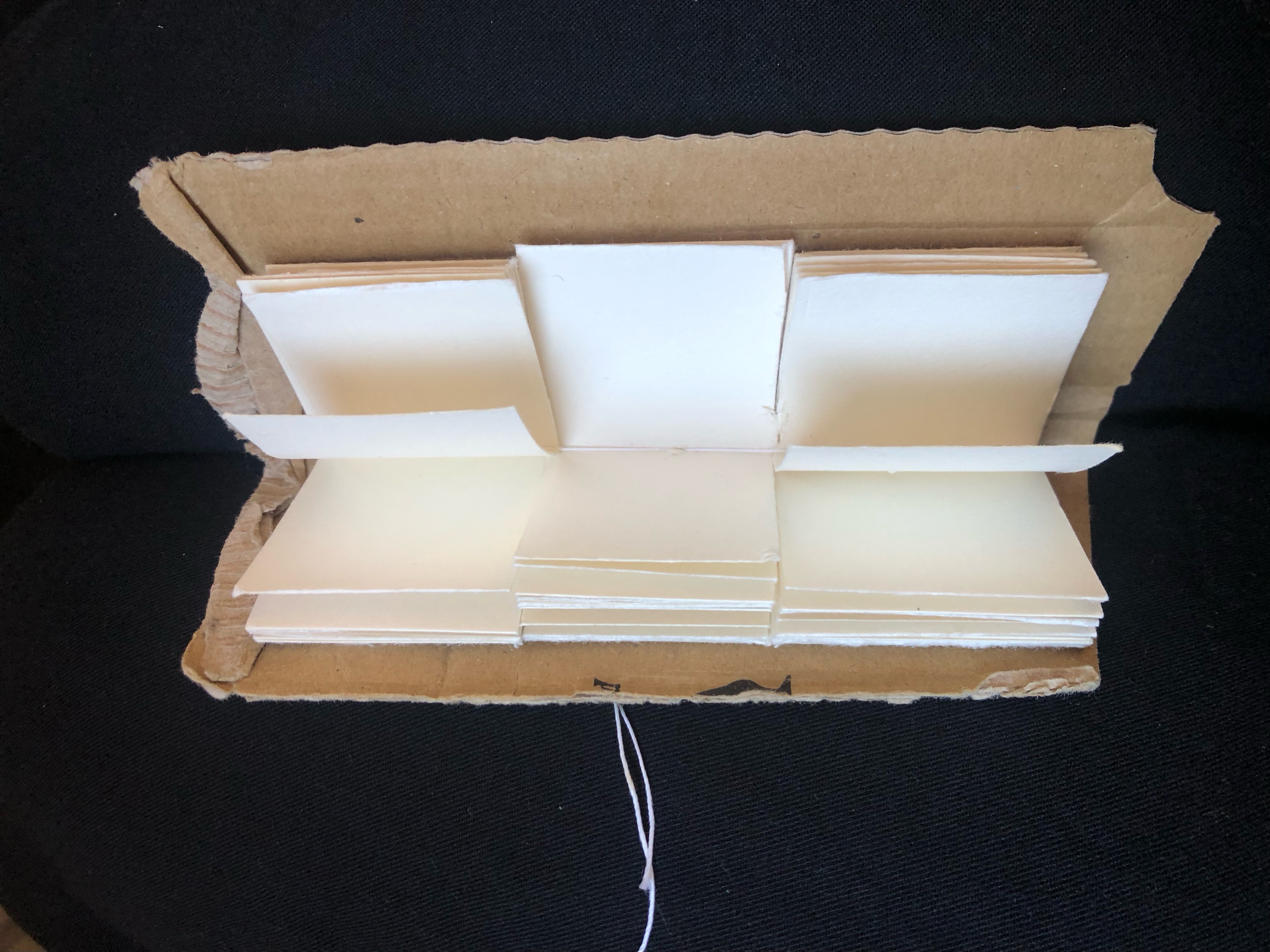
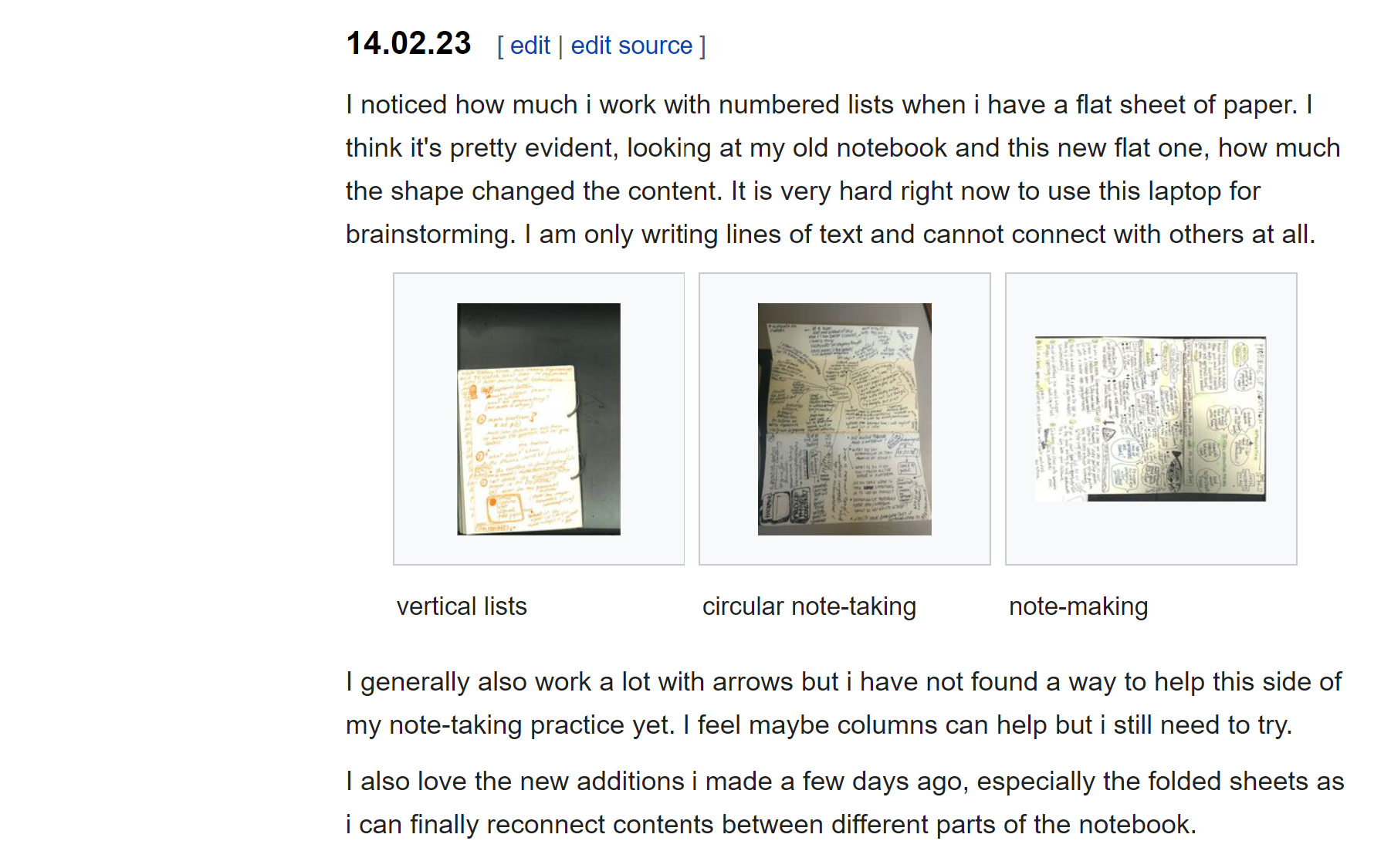
.jpg)
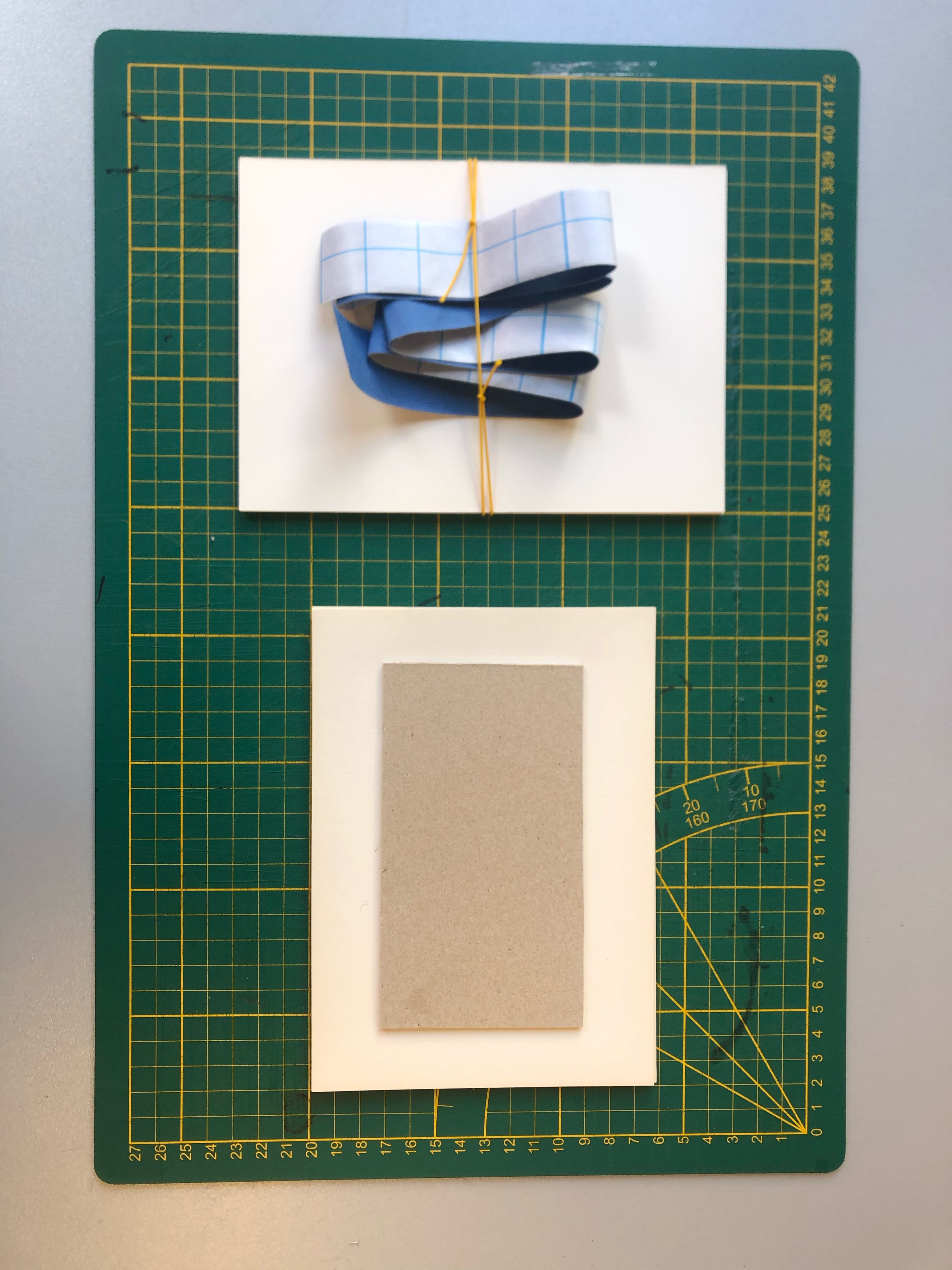
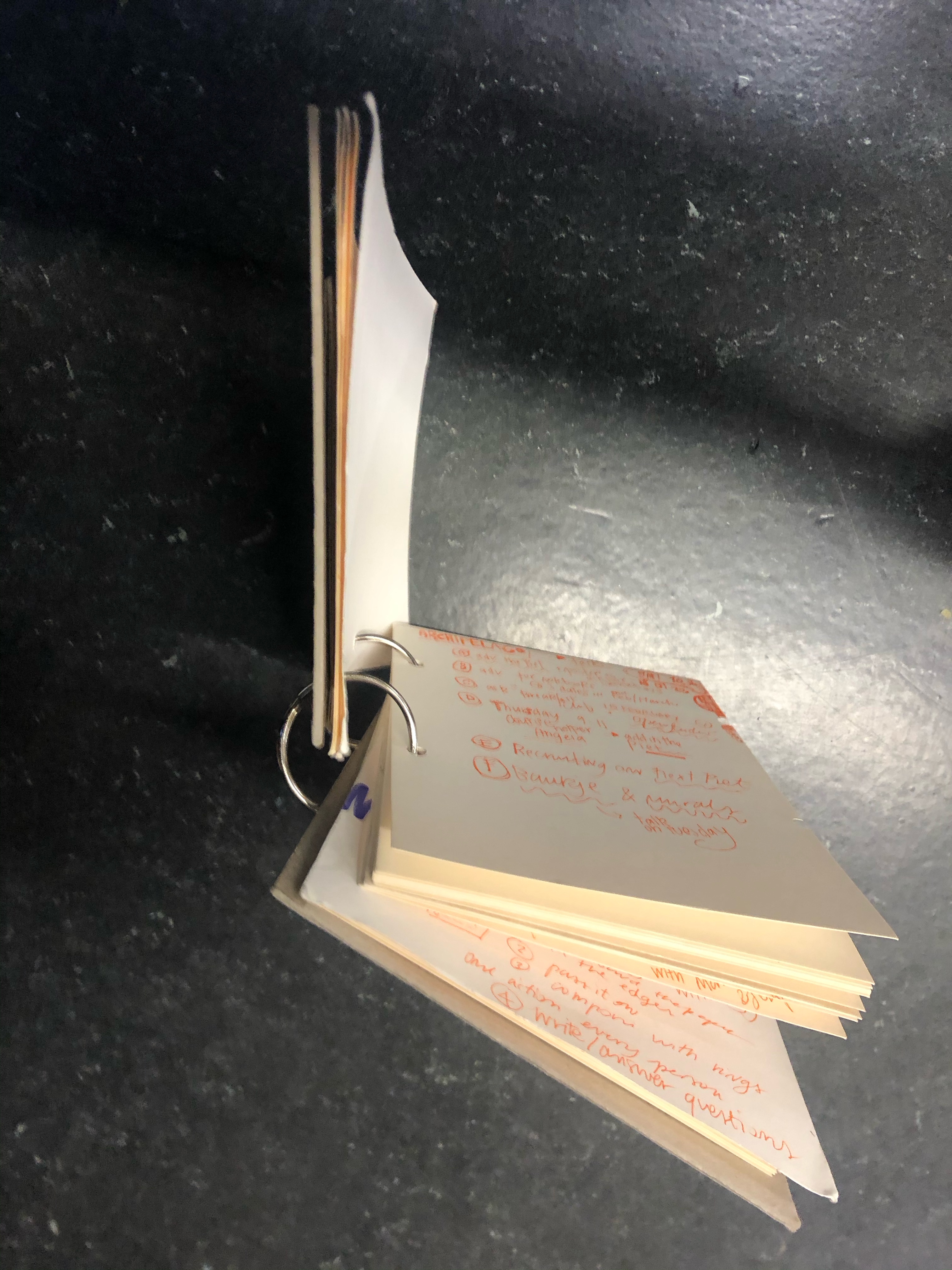
A personal notebook process is the ever-changing process a person can go through, by analysing and keeping attention to their individual note-taking activity and their use of paper notebooks to understand themselves and their needs.
... Cardboards from packages are quite common to have in a house. they become the perfect cover for notebooks. sometimes their shape becomes an invitation for a shape you did not think of before, or helps imagine an add-on that can become essential in your notebook practice.

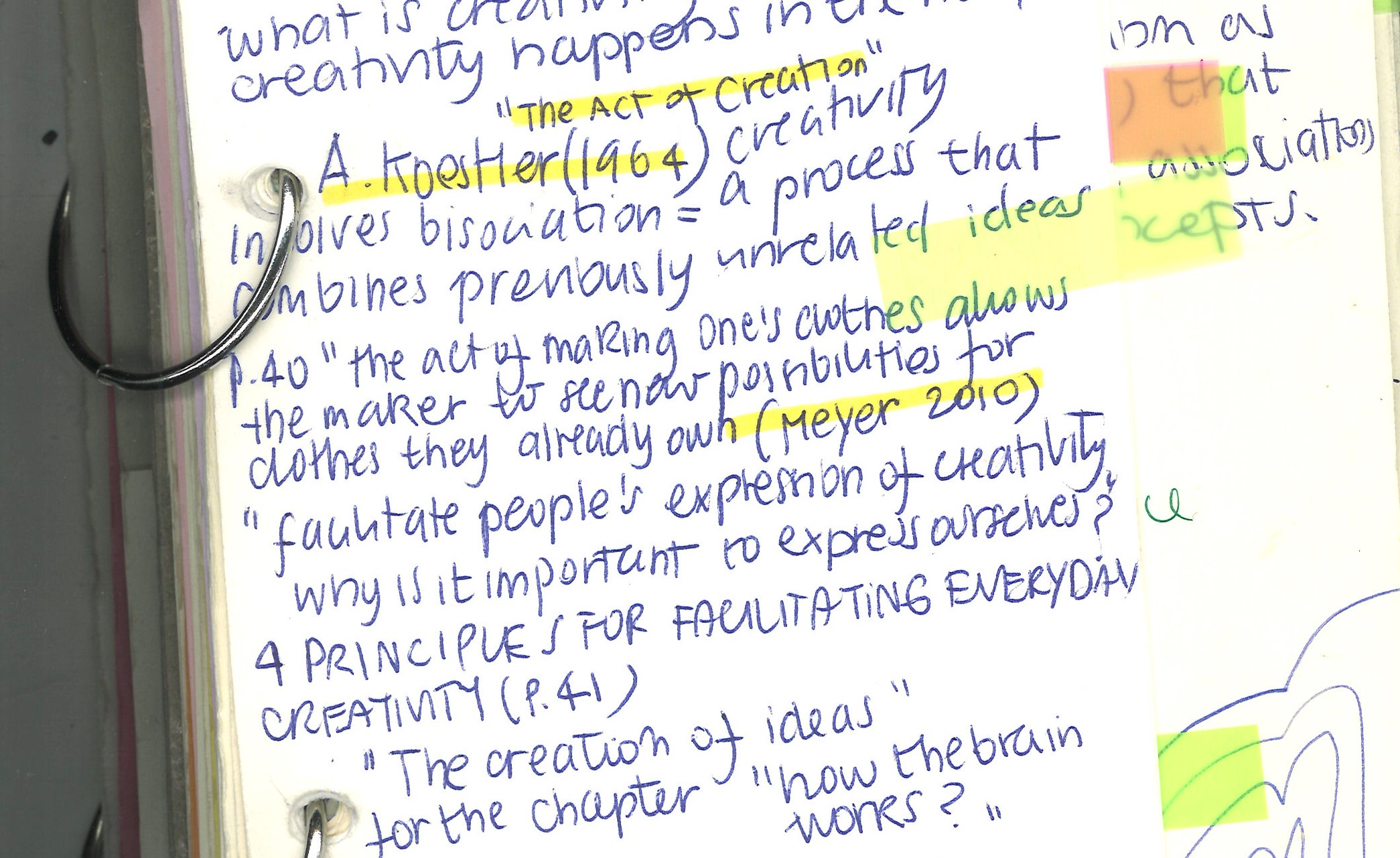
... FACT: Paper sheets follow national or international regulations. For example, the typical A4 used for office prints, is part of the international system ISO 216. This is also important to consider when you are making a notebook. If you decide to go for a unusual shape that does not fit in an already existing size, you'll need to think about what to do with the leftovers of your cut. There are many ways to solve this problem but the main is prevent it before you need to solve it. Could you make the same notebook you had in mind but in some way be able not to cut the paper? I love folds. If you really can't, try to cut a size that could be reused for something else. Make a super vertical notebook for fast thoughts or for grocery lists.
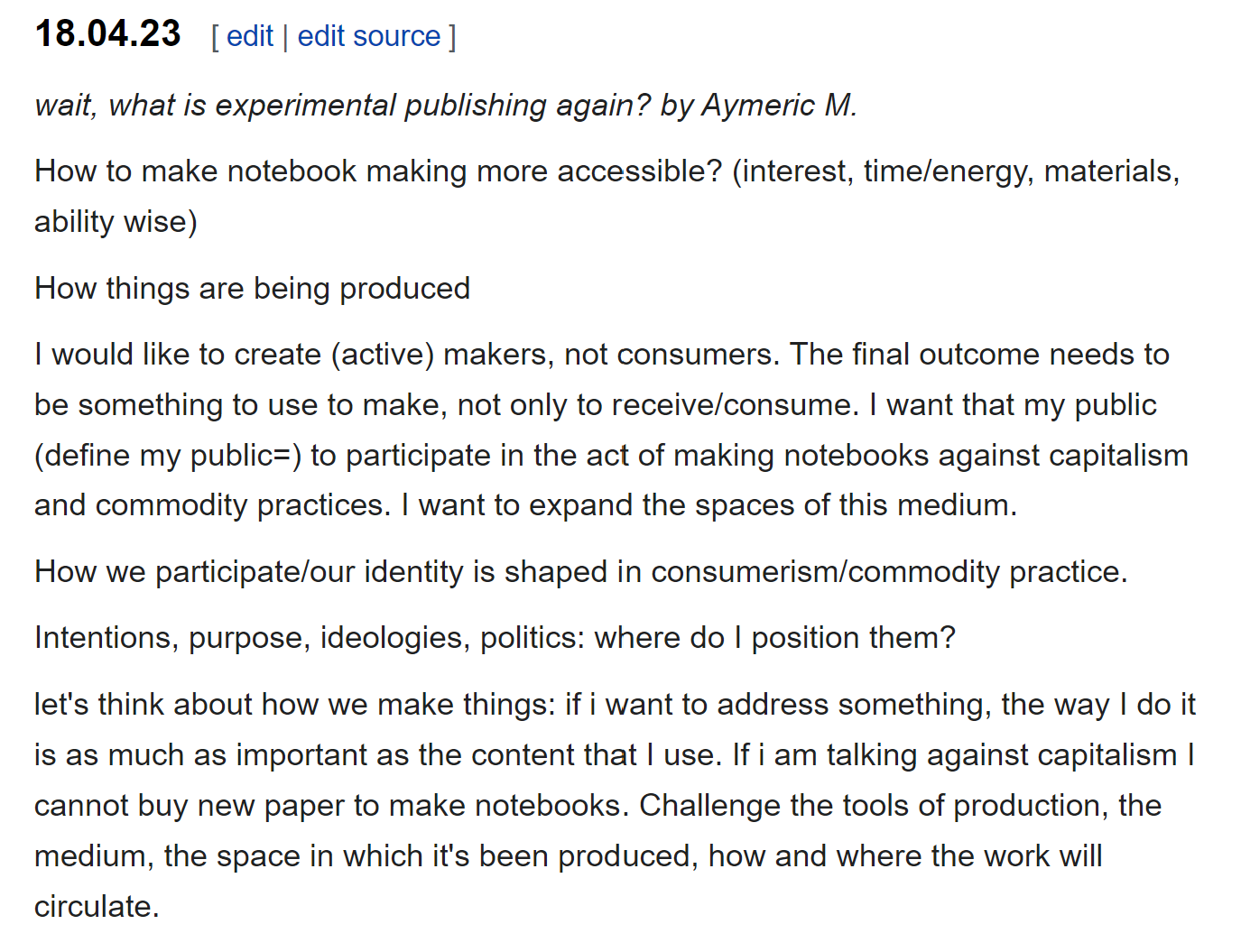
let's same, as always, most of the things come from a lot of talking and thinking, as well as experimenting for years and years. in this particular case, The methods I used to feed this publication are multiple experiments and approaches I worked with between March 2022 and April 2023. The first one is my personal notebook process that consists in the creation of different prototypes to analyse and question my use of notebooks and to discover how to modify them to adjust them to my needs. The second method is discussion groups to collect opinions through conversation and questions. The third one involves gathering and analysing the work of other users to understand how they approach the same process. The last method is the Collaborative Explorative Sessions (C.E.S.): the C.E.S. are a collaborative playground to experiment with a collection of exercises together with the workshop participants. I created the C.E.S. through the knowledge adquired in the process and specifically thanks to the first three methods included in the research, as well as inspired by Generative Design Research, which includes the end user in the design process (Sanders and Stappers, 2014). All these methods will not be discussed inside this publication, but relating thoughts and opinions will be presented in some of the cards. In addition, the results of the research are published in my thesis, "Paper Notebooks: From an Industrial Model to a Tool of Expression" (2023) produced in the context of the graduation research from the Experimental Publishing (XPUB) Master course at the Piet Zwart Institute, Willem de Kooning Academy, Rotterdam University of Applied Sciences.
step 2. look at your notes and move through them. what do you notice? do you see any pattern in your behaviours?
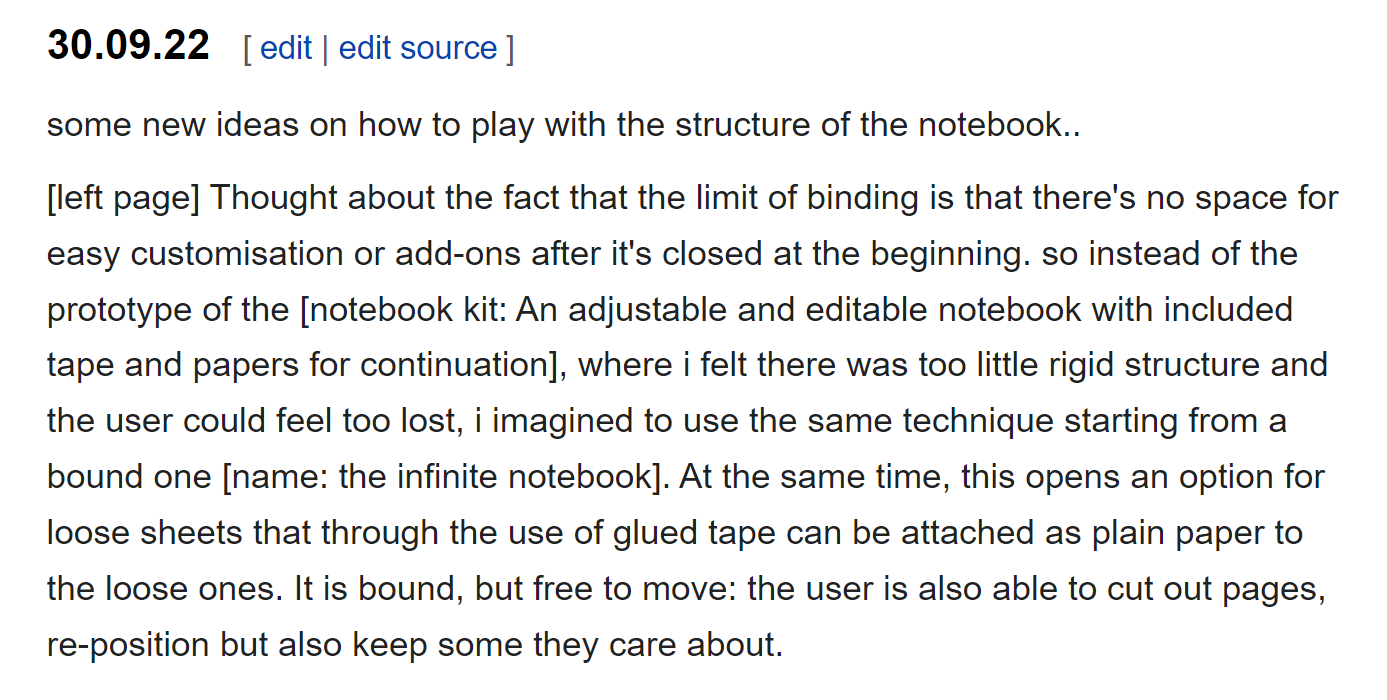
.jpg)

.jpg)
.jpg)

step 4. while wondering around your pages, consider when you wrote something, in which situation, for which reason. do you know how is the notebook supporting you?
.jpg)
There are a lot of locations in almost every city that collect paper that cannot be used anymore. Luckly, nowadays, most of these locations, such as printing spaces, stationery shops, book makers, separate and recycle the materials they cannot use. Most of the times, these leftovers are in a very long rectangolar shape, do you know why? When you print, but the shape of your print doesn't 100% fit the paper sheet you are printing on, this produces a lot of leftovers, mainly on one side or two of the sheet. ...

.jpg)


.jpg)
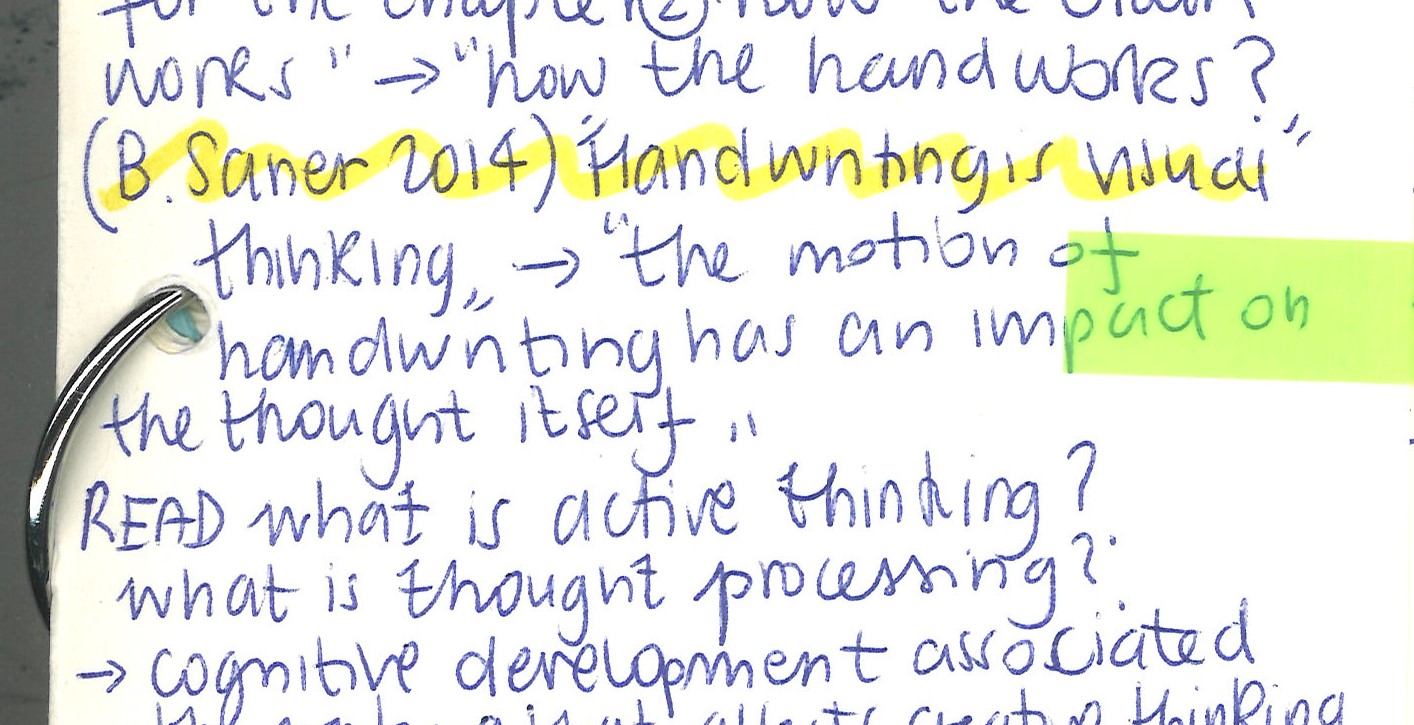
I wanted this publication to have two main characteristics: modular and customisable. The modularity became important to me and my way of taking notes and making notebooks. Modularity allows reconnections, both physically both content-wise. In this context, I decided to produce this publication as a physical 'random choice' to access the content: rotating the cards on the rings, the materials are scattered and re-connected by the user (you). It becomes customisable because of the type of binding I used. I was not happy use plastic instead of metal, but i had this publication to allow a almost 360 degrees rotation so that all the content in the rows could reconnect to the other rows. I was also not happy with being obliged to buy something specific to achieve my intent ...
.jpg)
... I also inserted some empty pages in the publication, to let some space for thoughts or ideas (if they come while browsing through). The main reason though, is that i have been wondering when a notebook is not a notebook anymore. I knew this publication was going to be printed, but i hope that through this different considerations, for some, this could still be defined as a notebook. The content comes from my reflections and the notes I took, on my laptop and on my notebooks. They were notes and now, after printing them out I wonder, are they still? The publication is also printed on an a4 to avoid paper waste. I picked for you 5 different types of paper to let you feel different options already intrinsicly within the publication.
... These locations do not only offer small rectangular sheets, but sometimes they get rid of stocks they can't use anymore. When you walk around a city, and pass by a stationery, get in and have a look. You might be surprised! Same in printing locations. ...

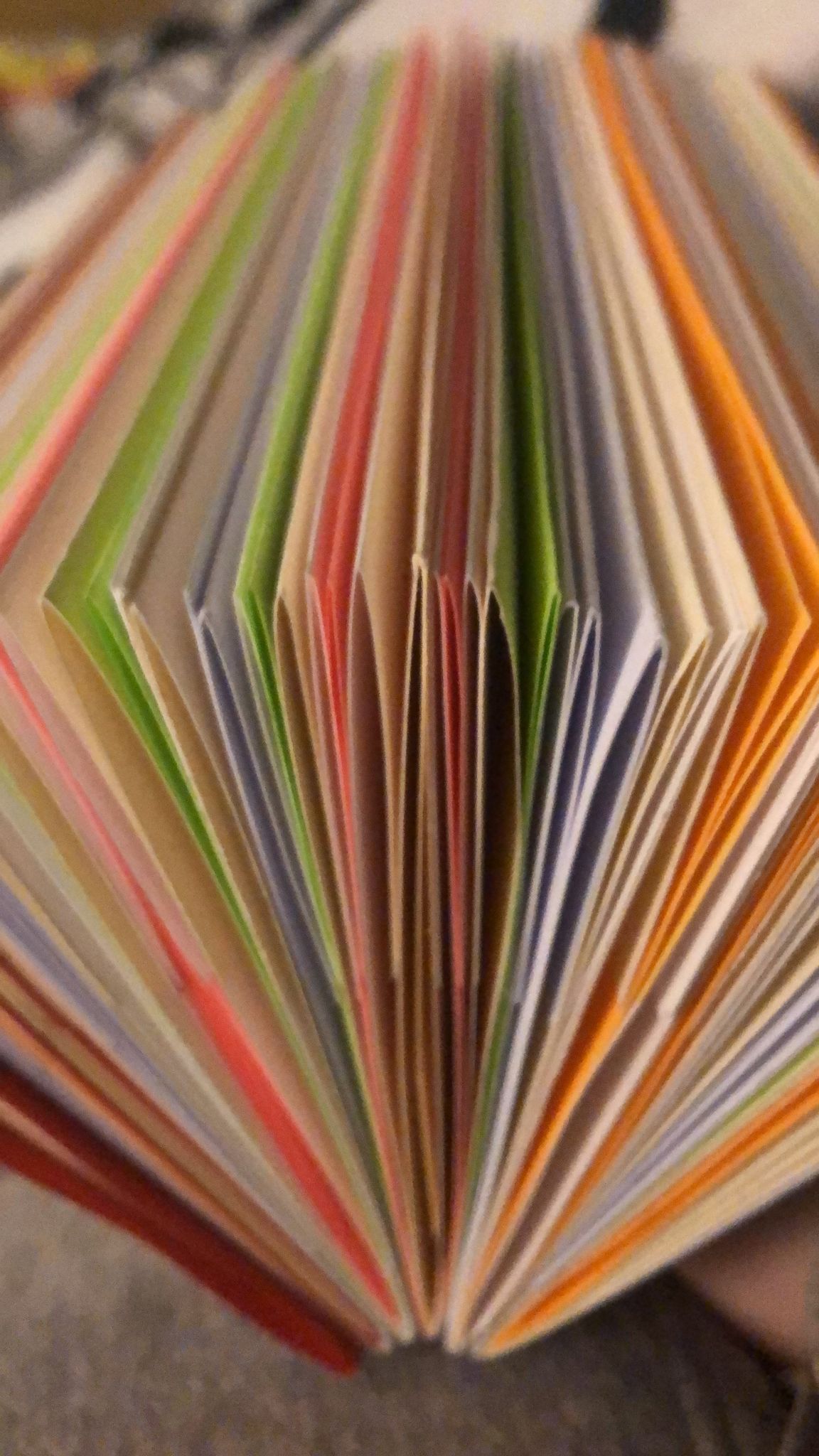
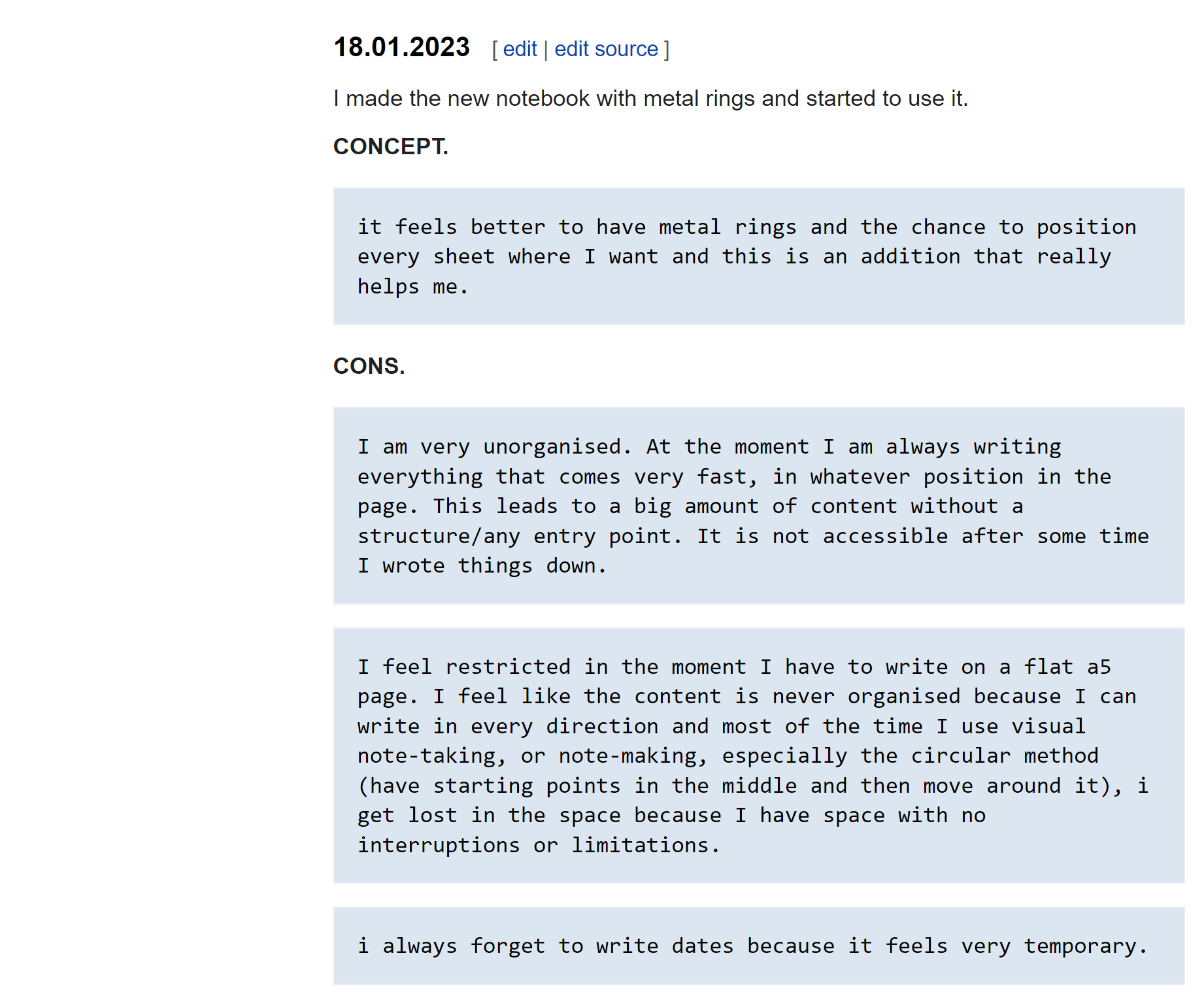
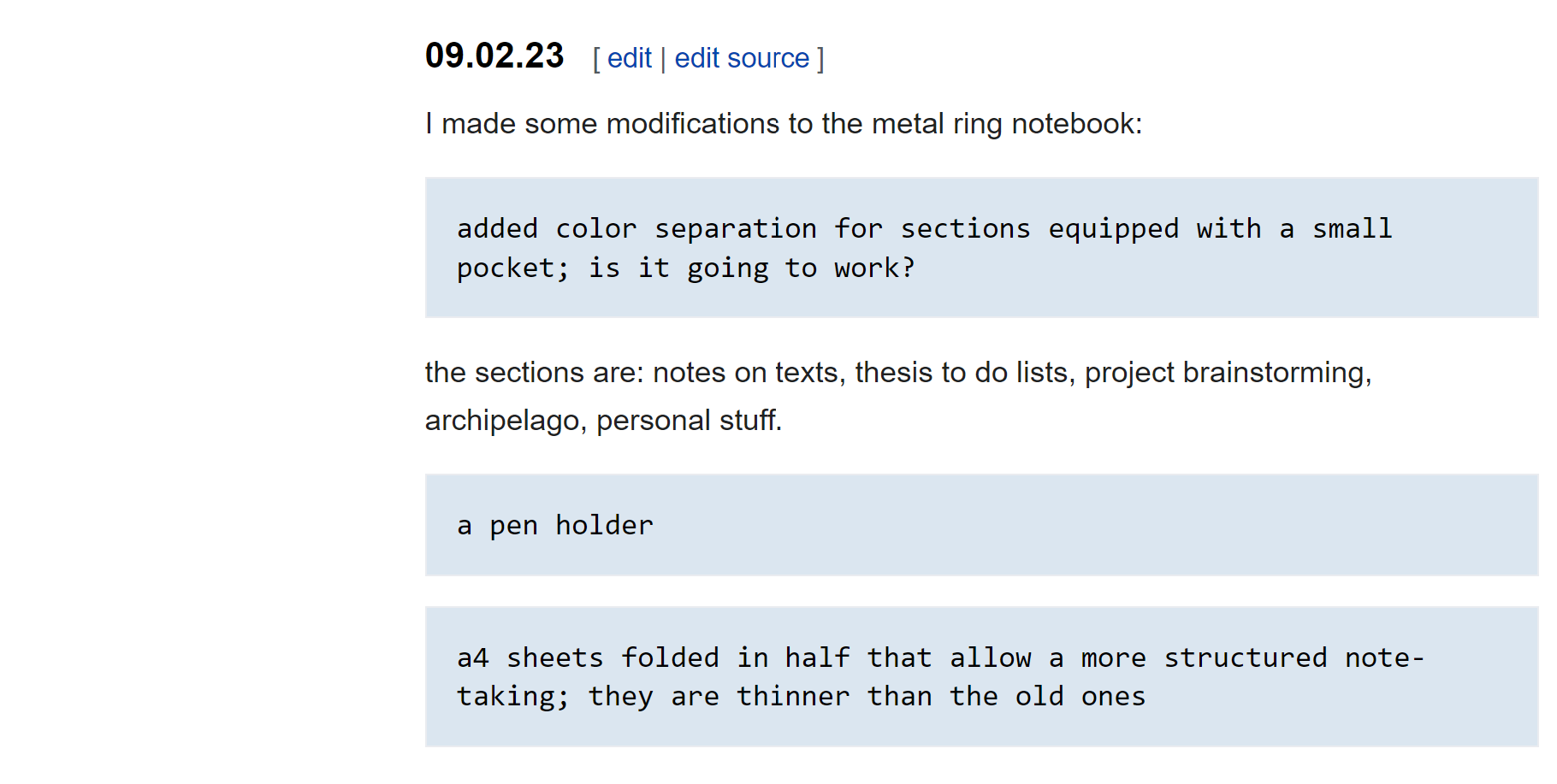
step 5. look at the shape of your notebook. is it small? is it big enough?

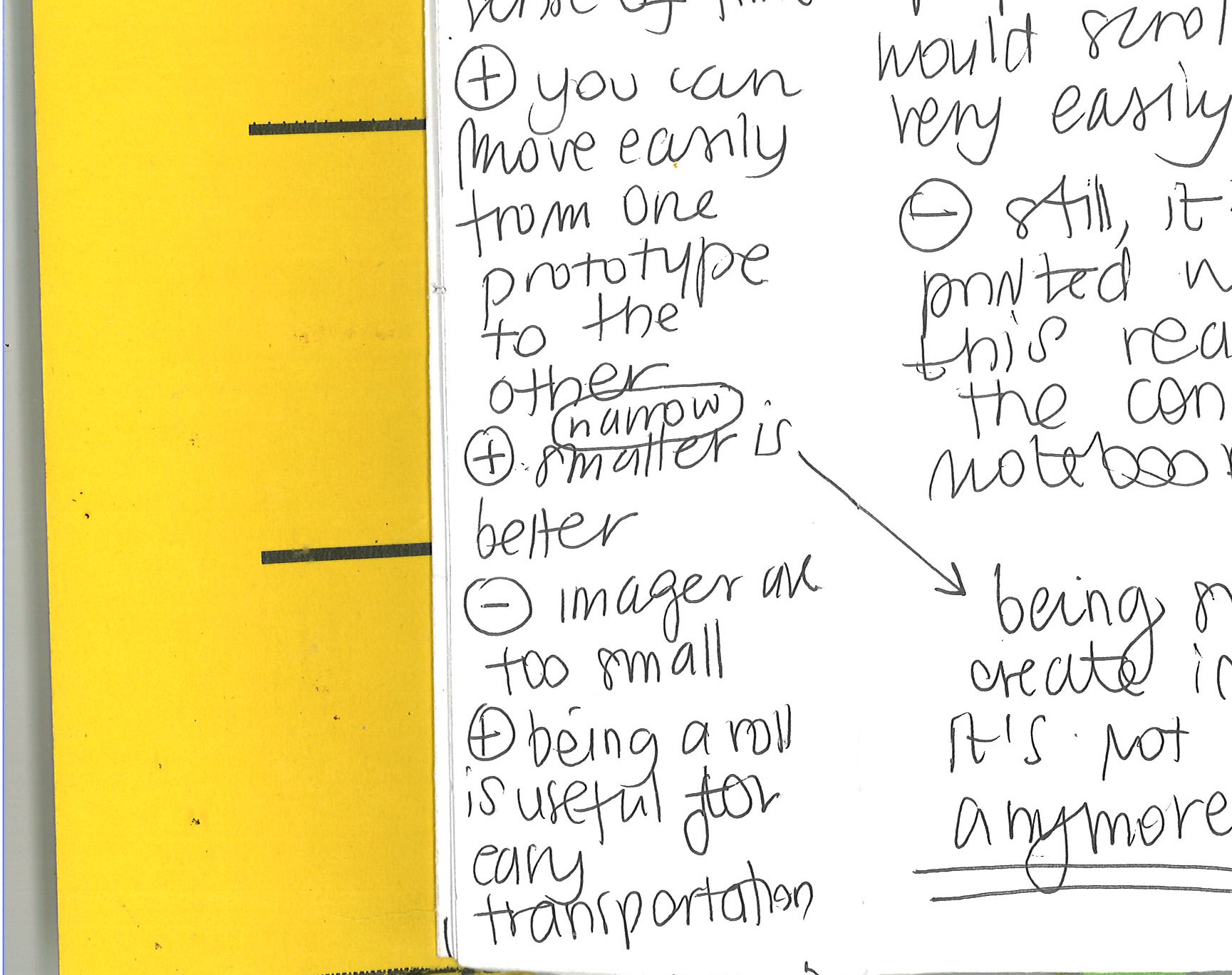


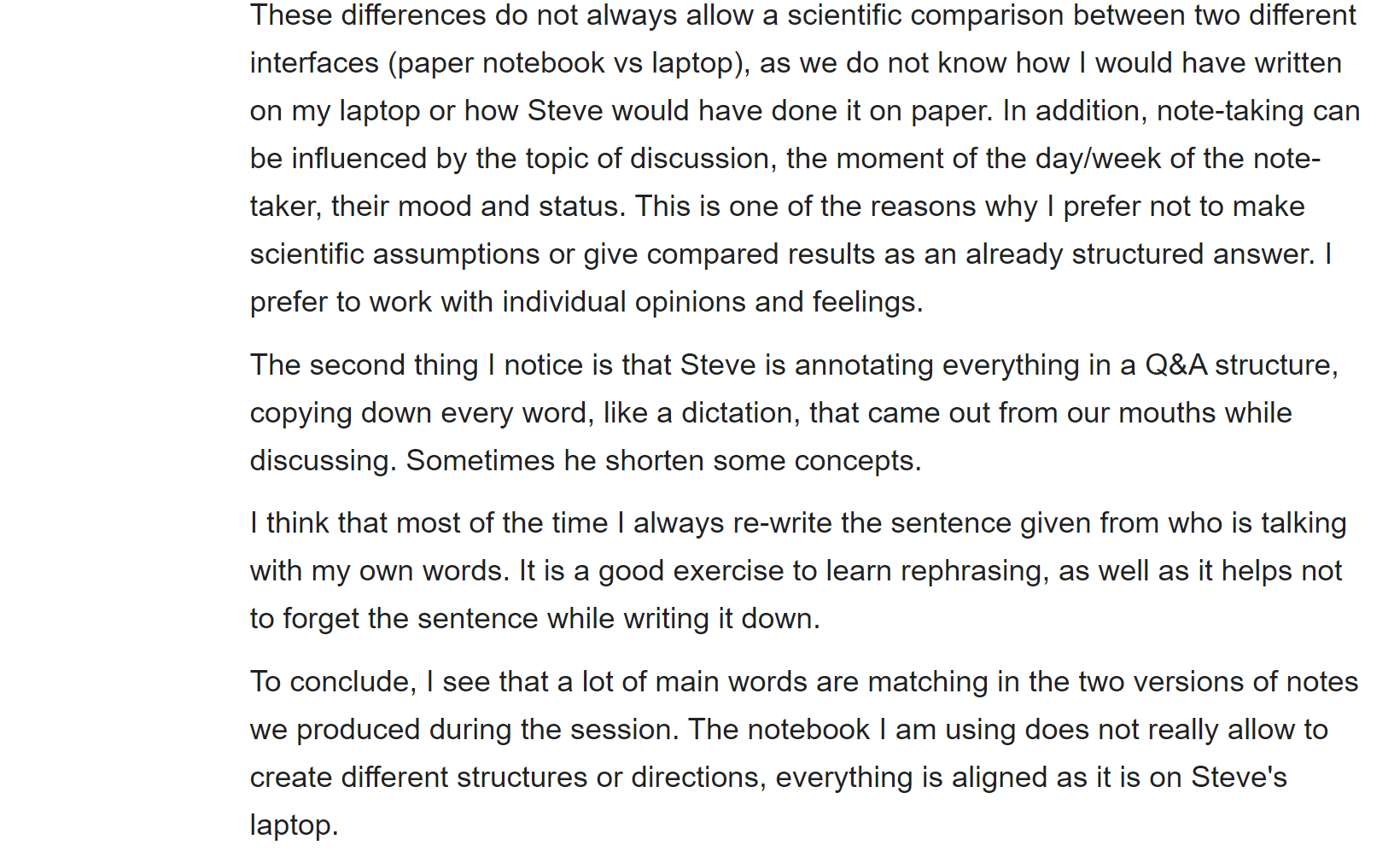
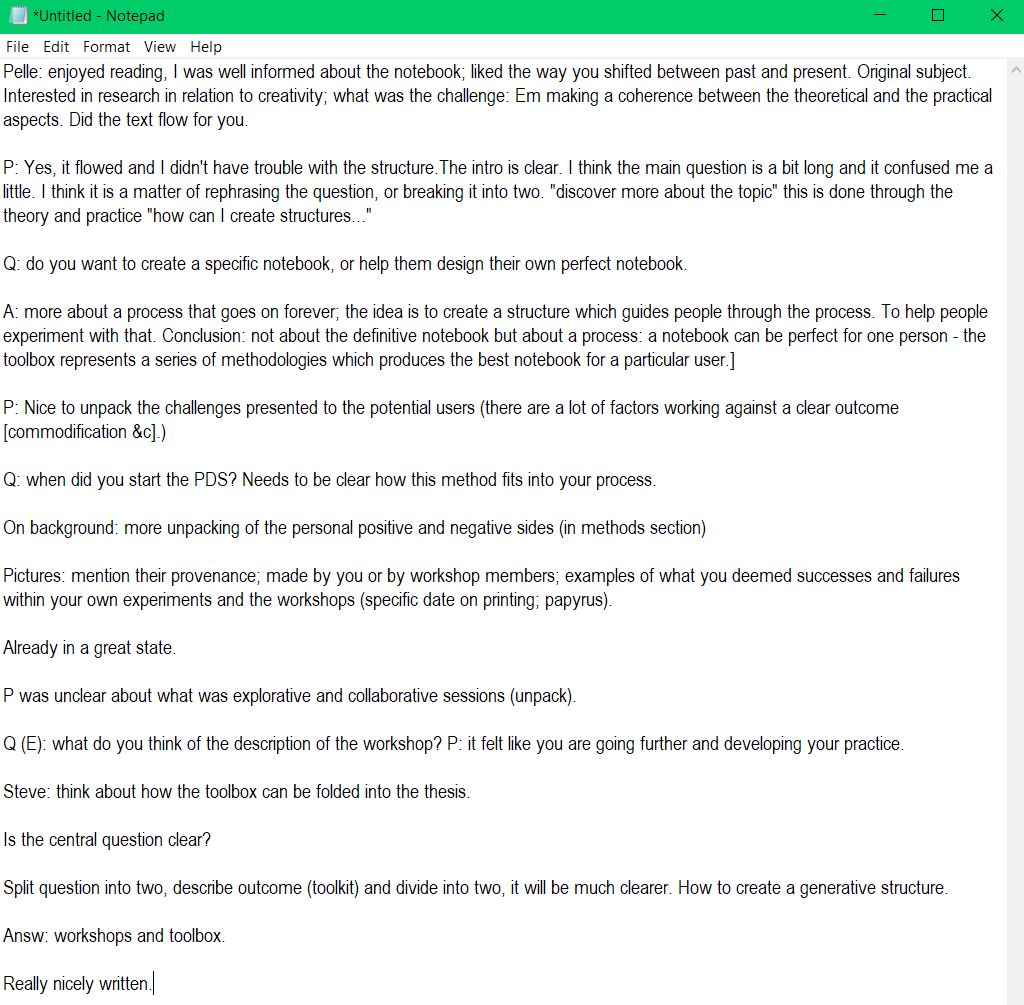

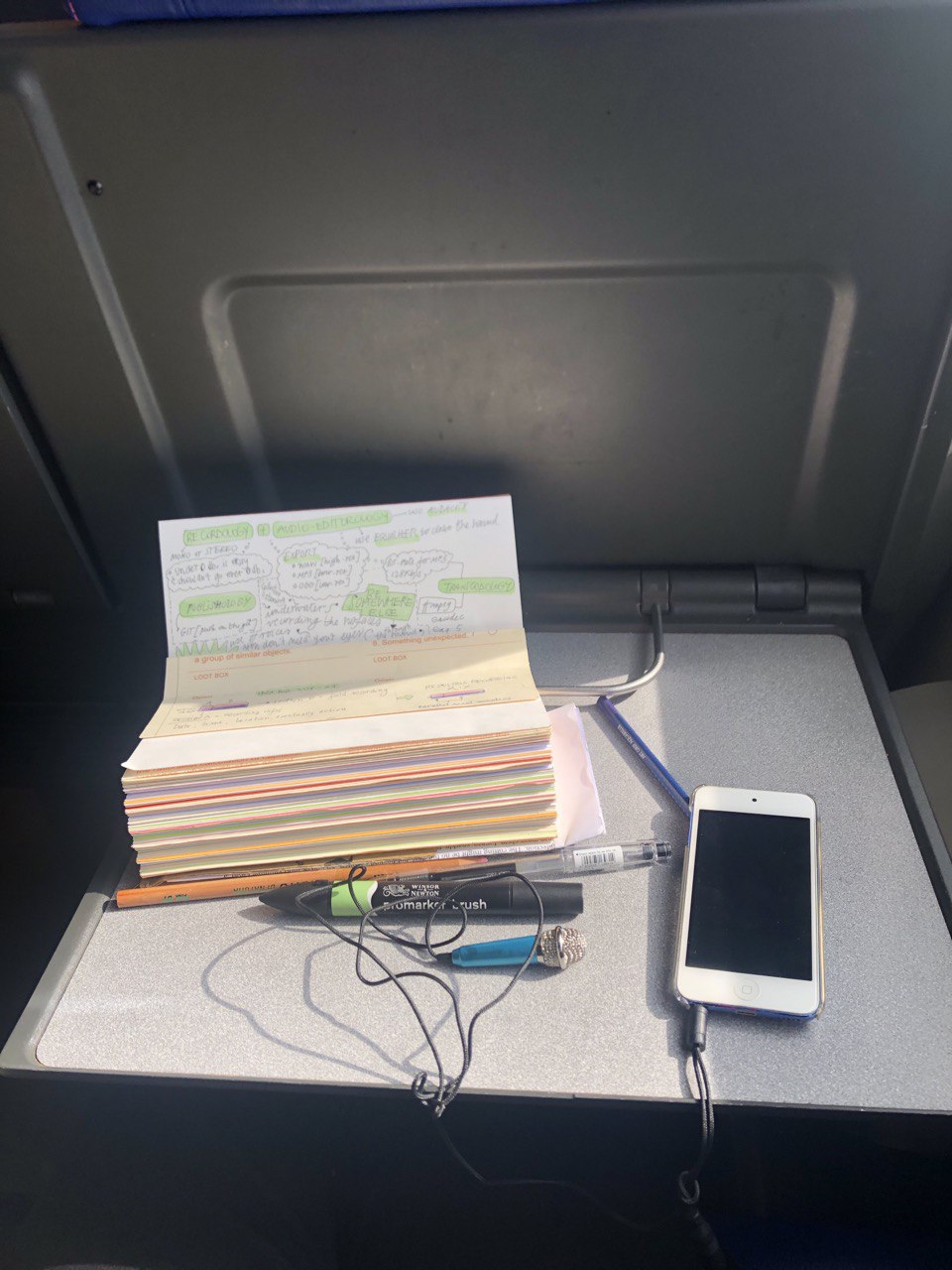
.jpg)
step 8. should the cover be hard or soft? can you re-use a cardboard you already have? do you have an old cardboard from?
.jpg)
.jpg)
.jpg)

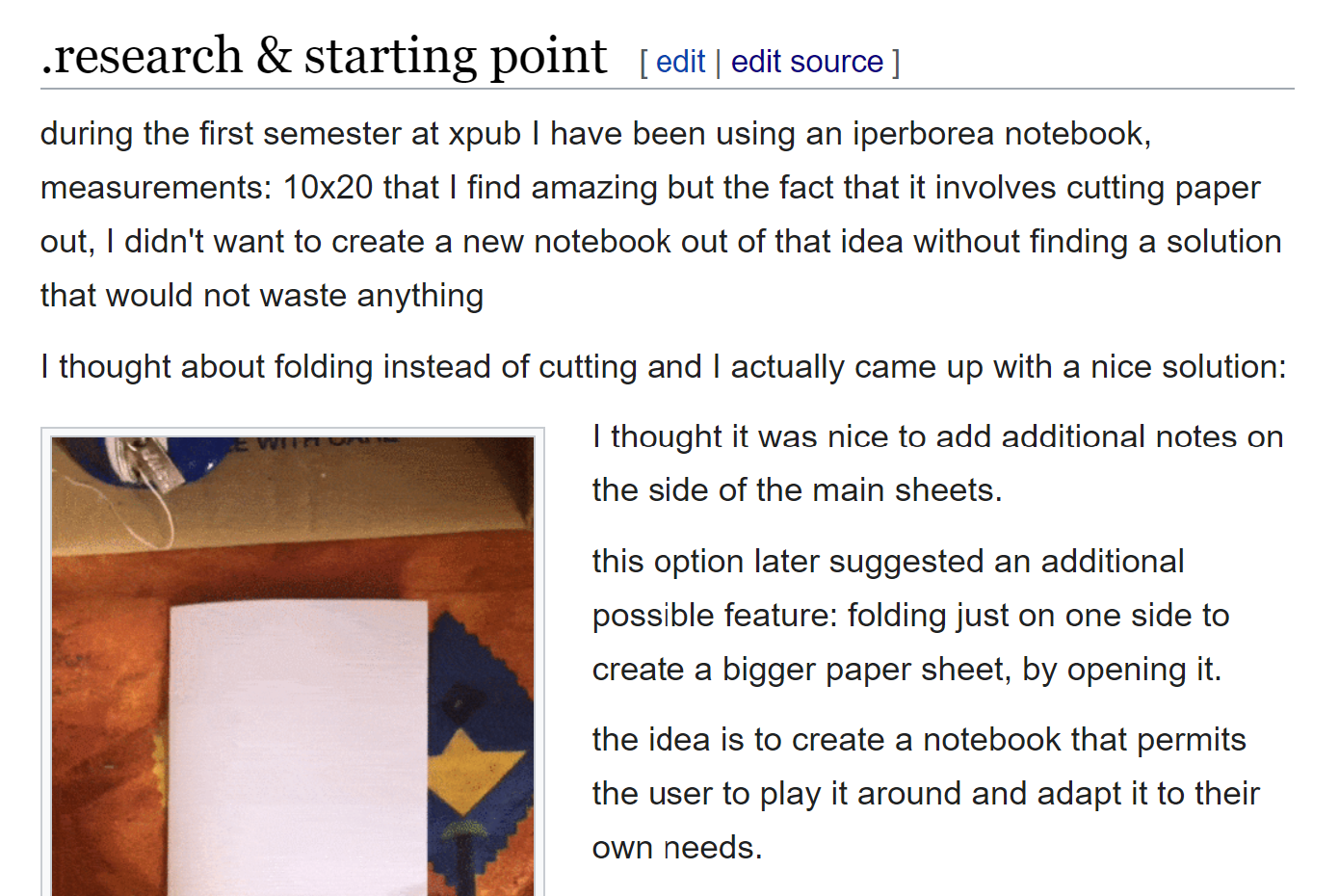
.jpg)
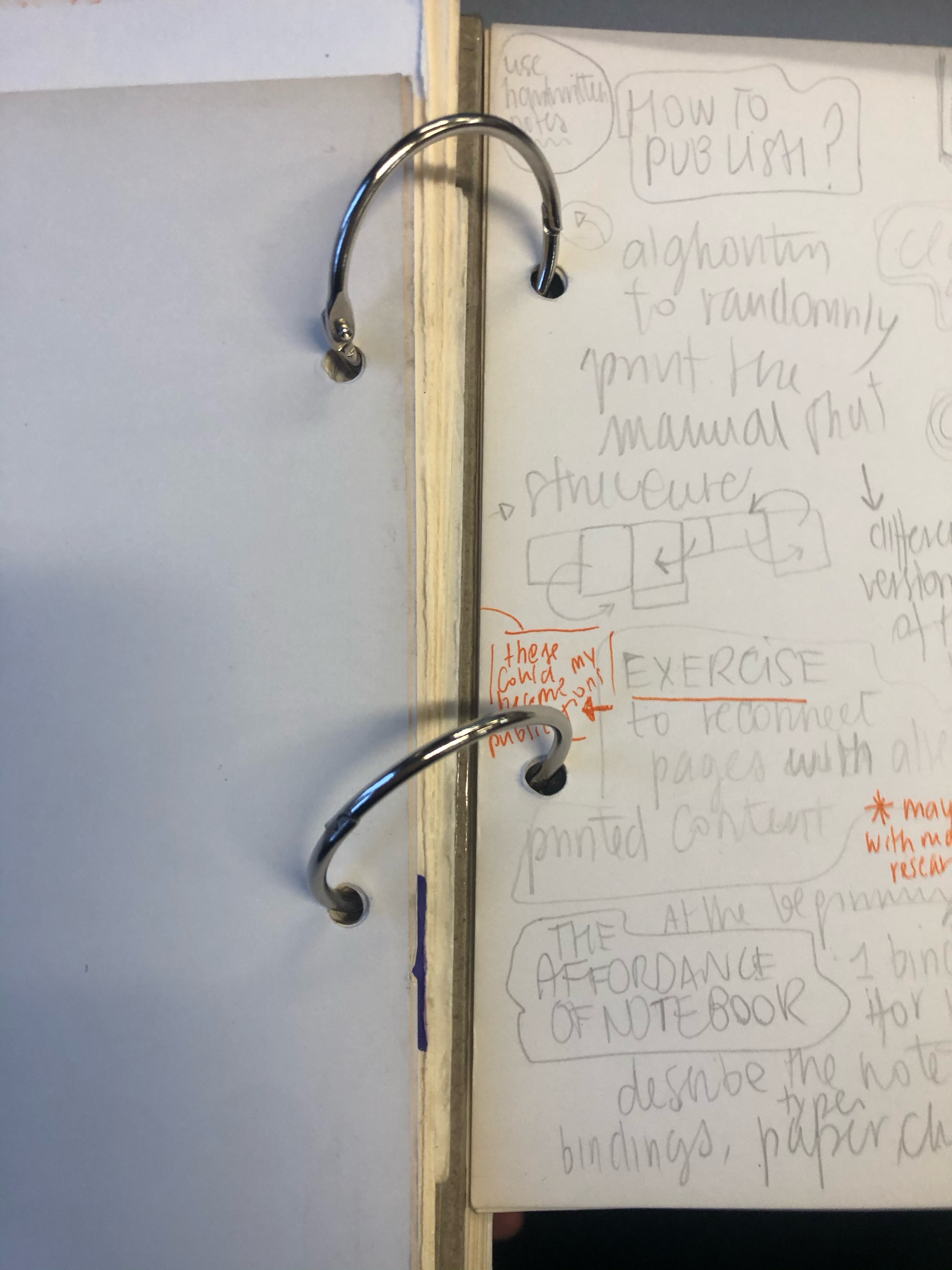
What is the starting need that brought to the creation and use of the notebook?** This question helps to highlight the starting point and main reason for the creation of a new notebook (or modification applied). it can be described in a few words.
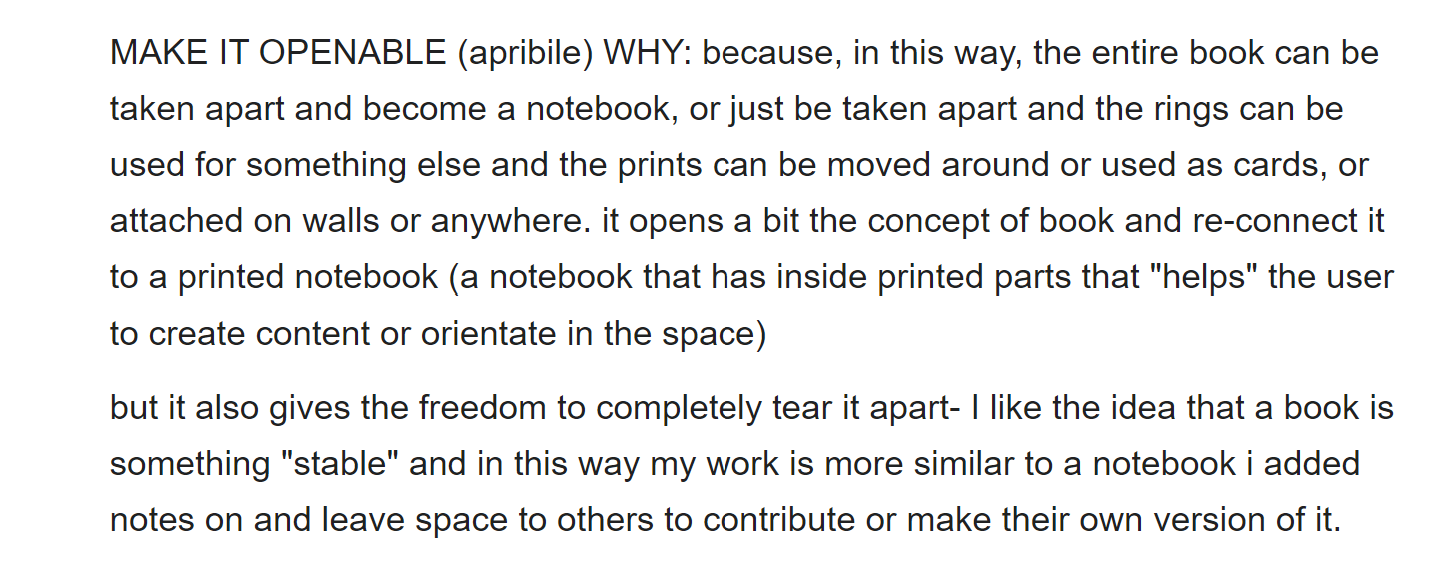
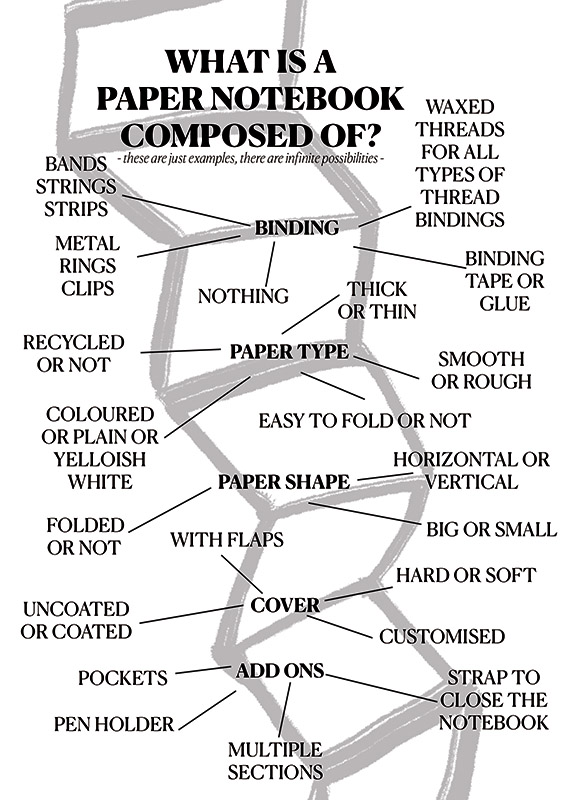
step 7. is there any addition that would make your notebook even more practical?
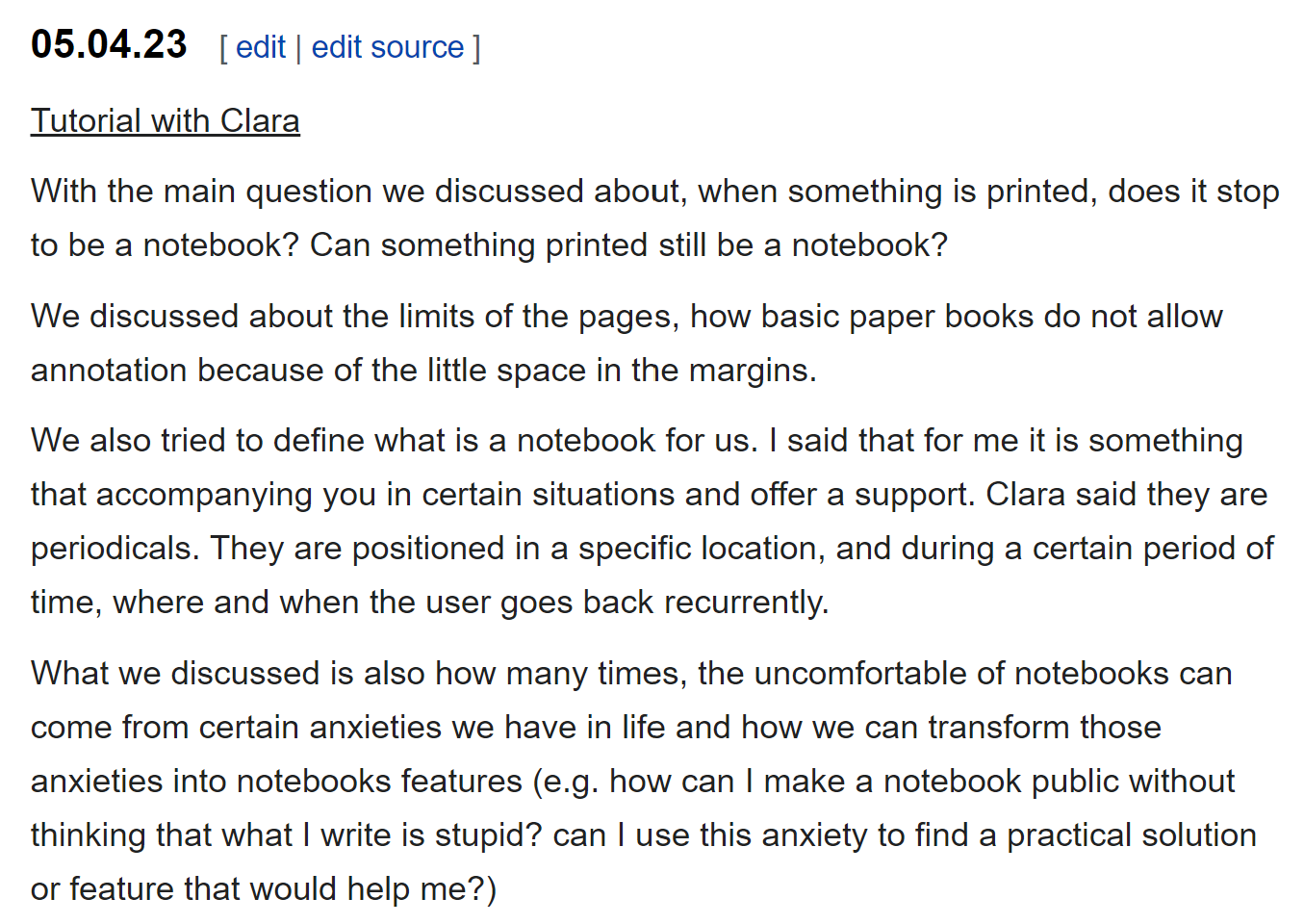
step 1. take your current notebook. look at it, open it. where do you write? what do you write?
.jpg)

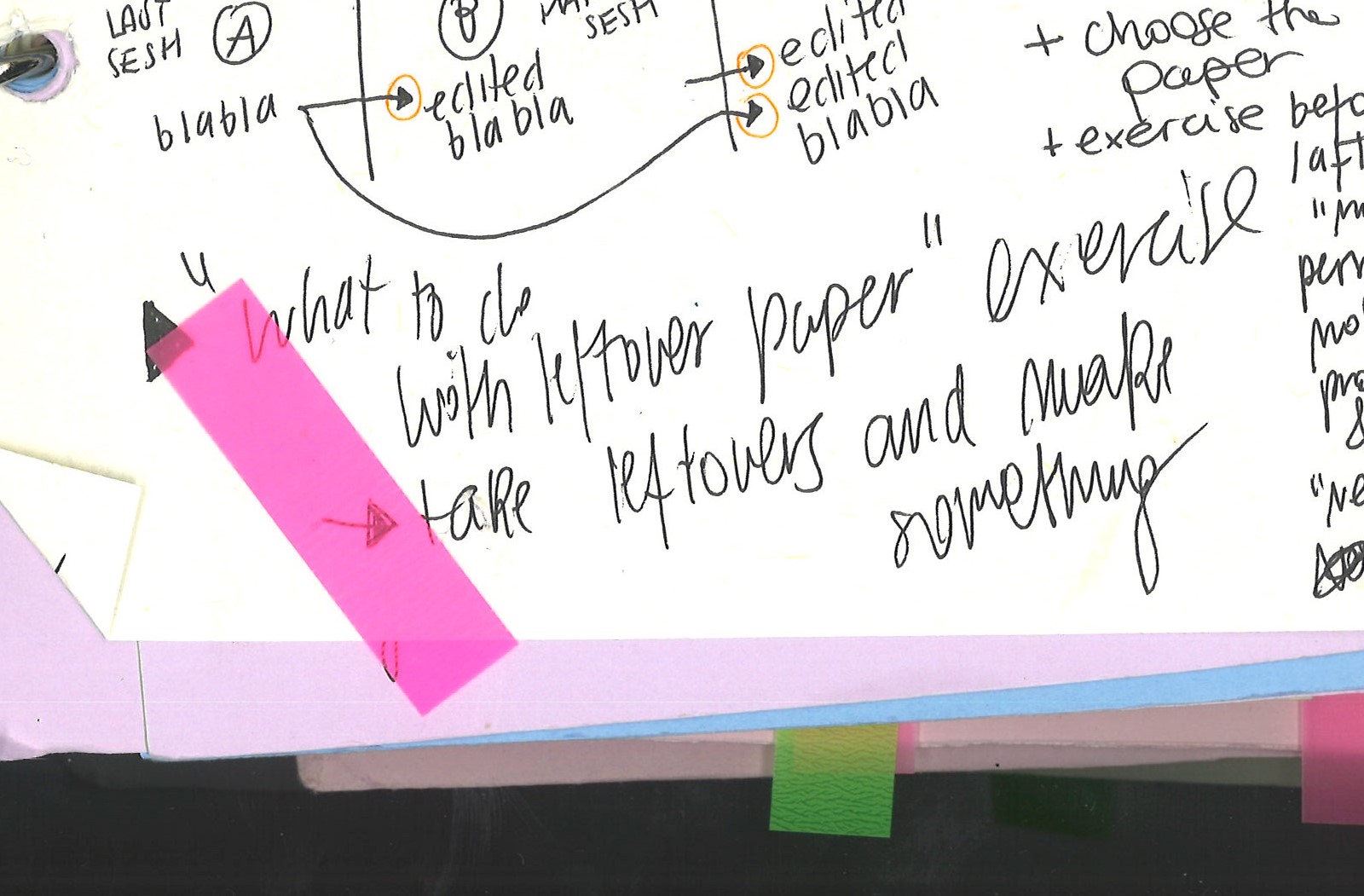
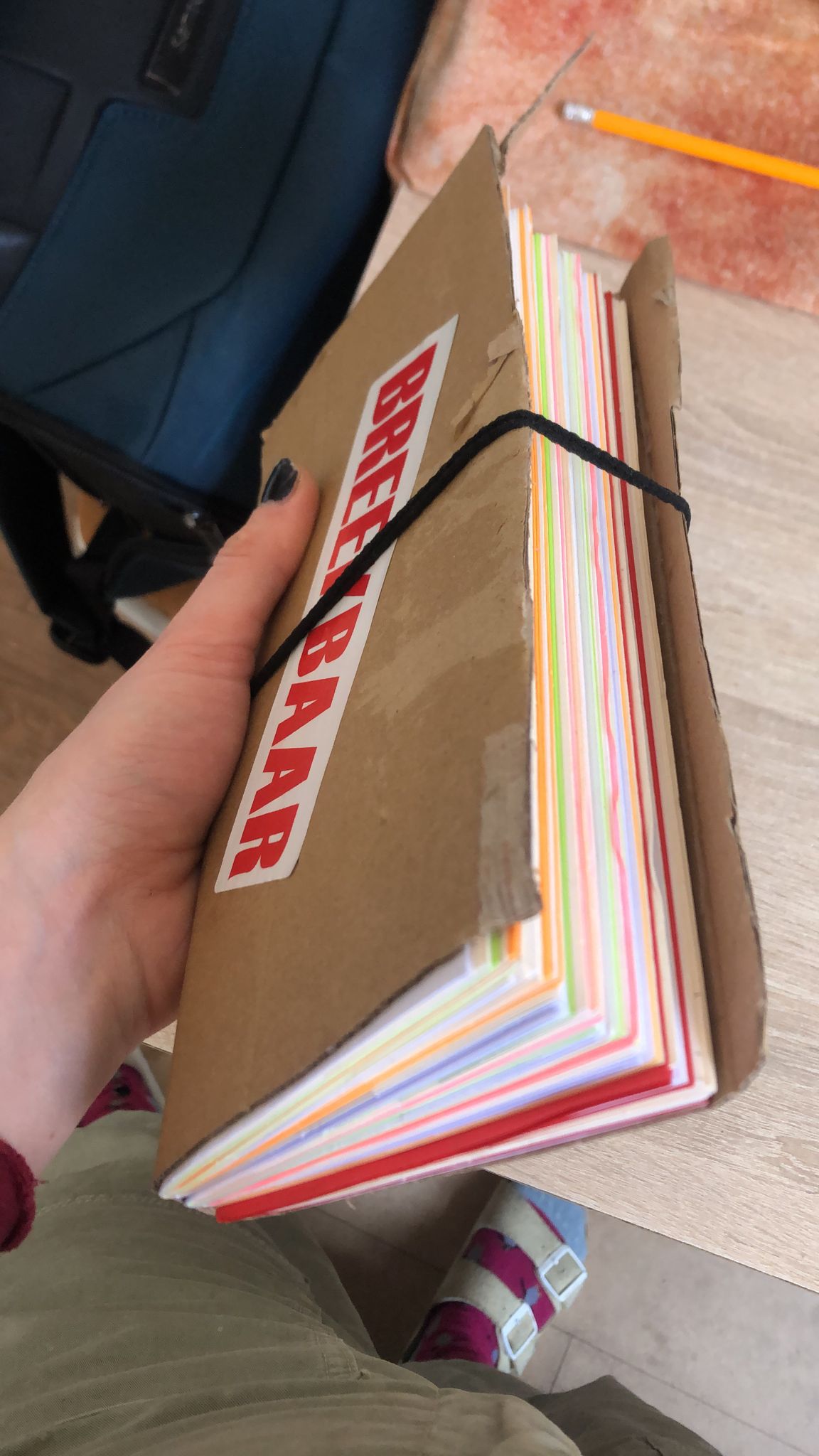
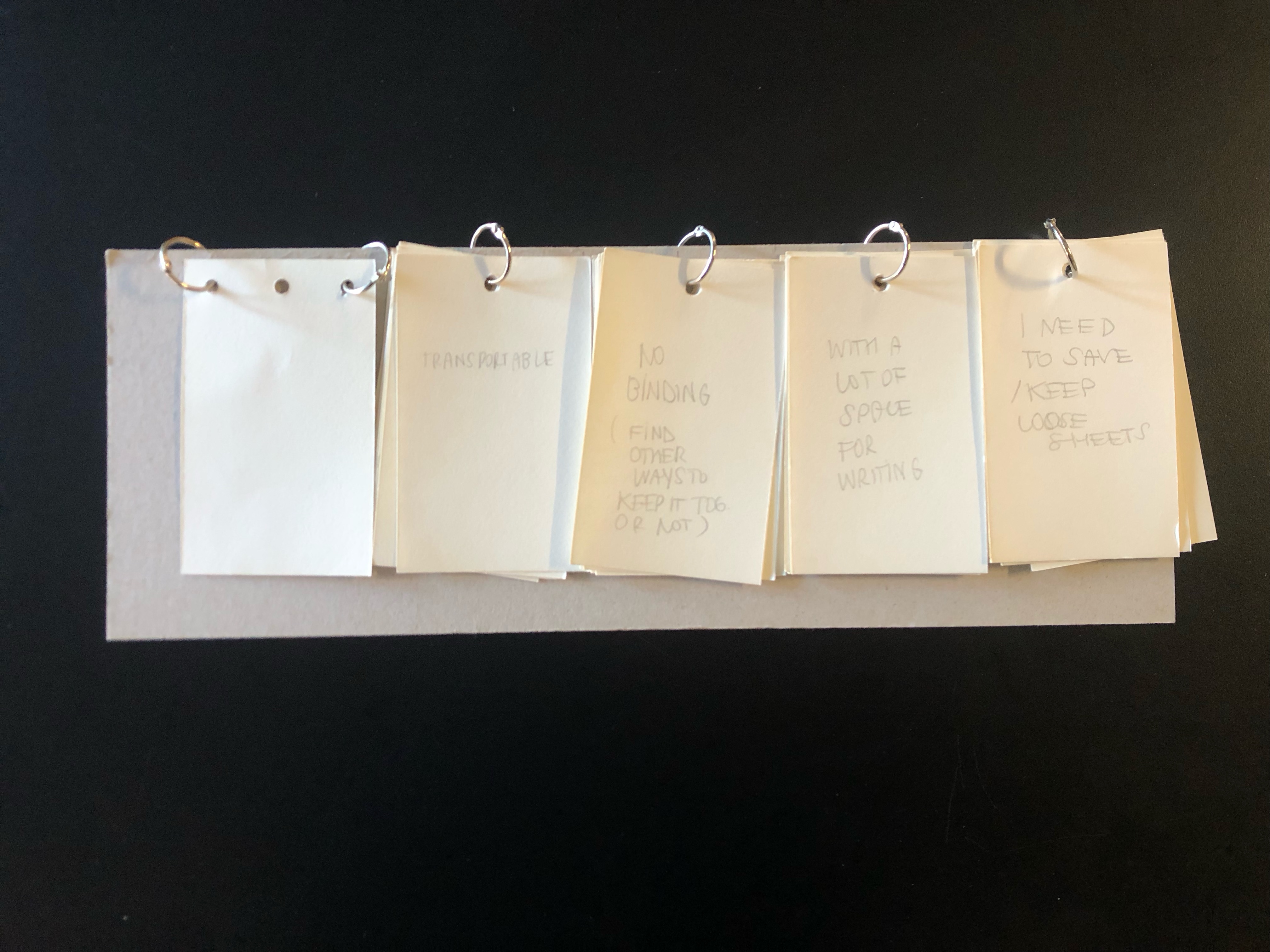
.jpg)